A week ago, Daniel and I had the privilege of visiting La Sagrada Familia, the largest church in the world! This jaw-dropping structure has been under construction for 140 years–and there’s still 25% left to go. But even in an unfinished state, La Sagrada Familia is an architectural wonder and is almost synonymous with Barcelona and its skyline.
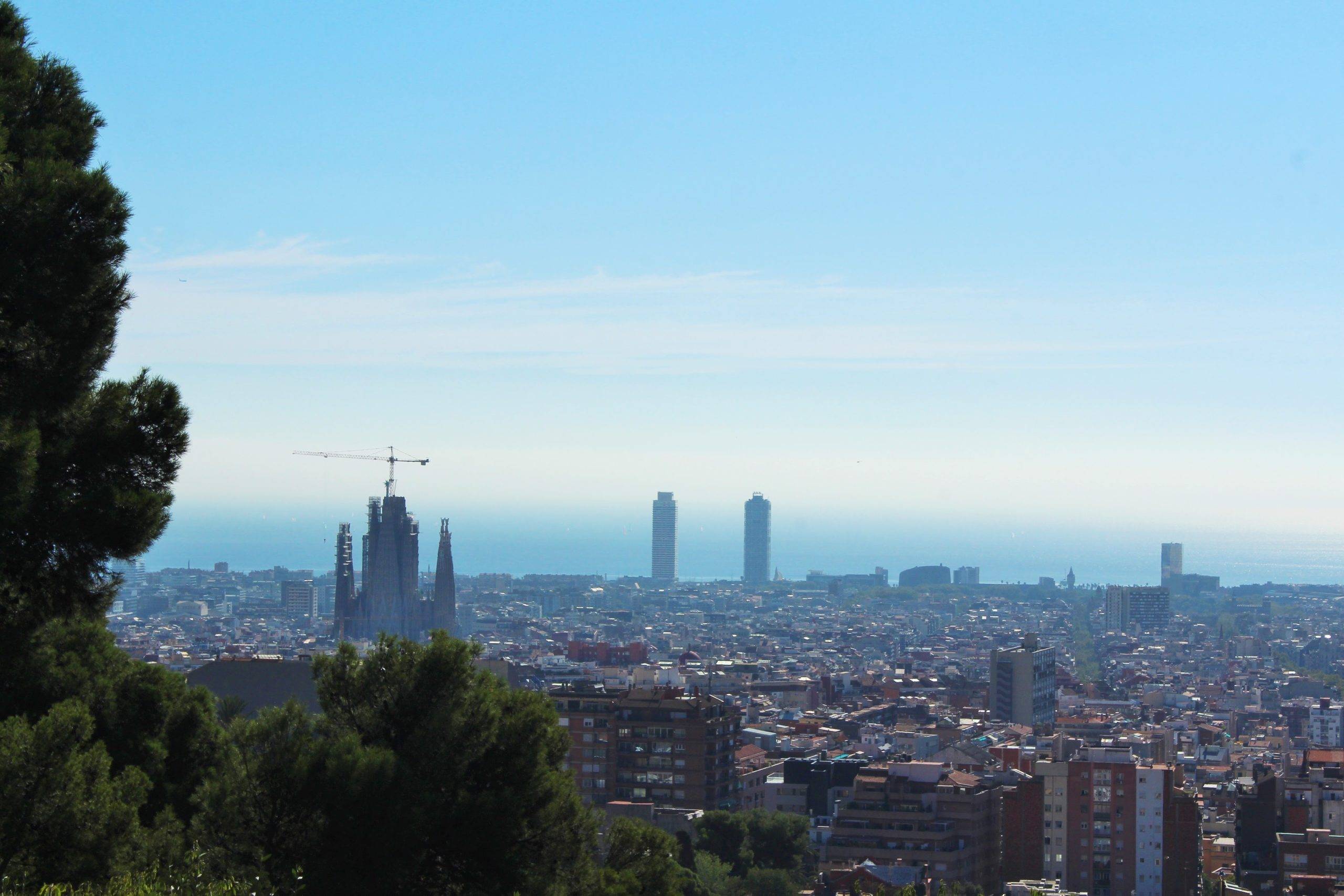
I knew when we started to plan our Barcelona trip that I wanted to visit La Sagrada Familia. After all, every picture I’d ever seen of it was incredible, and it’s famous. But I had some trouble finding answers to many of the questions I had about it. Many resources are in Spanish, and others are too short to paint an accurate picture.
So that’s why I wanted to create this guide for my readers! It will give you an overview of what to expect during your visit and tips and tricks for having the best experience possible.
Let’s go!
In This Post:
Tips & Tricks for Visiting La Sagrada Familia
Quick Overview of La Sagrada Familia
The Exterior of La Sagrada Familia
The Interior of La Sagrada Familia
Tips & Tricks for Visiting La Sagrada Familia
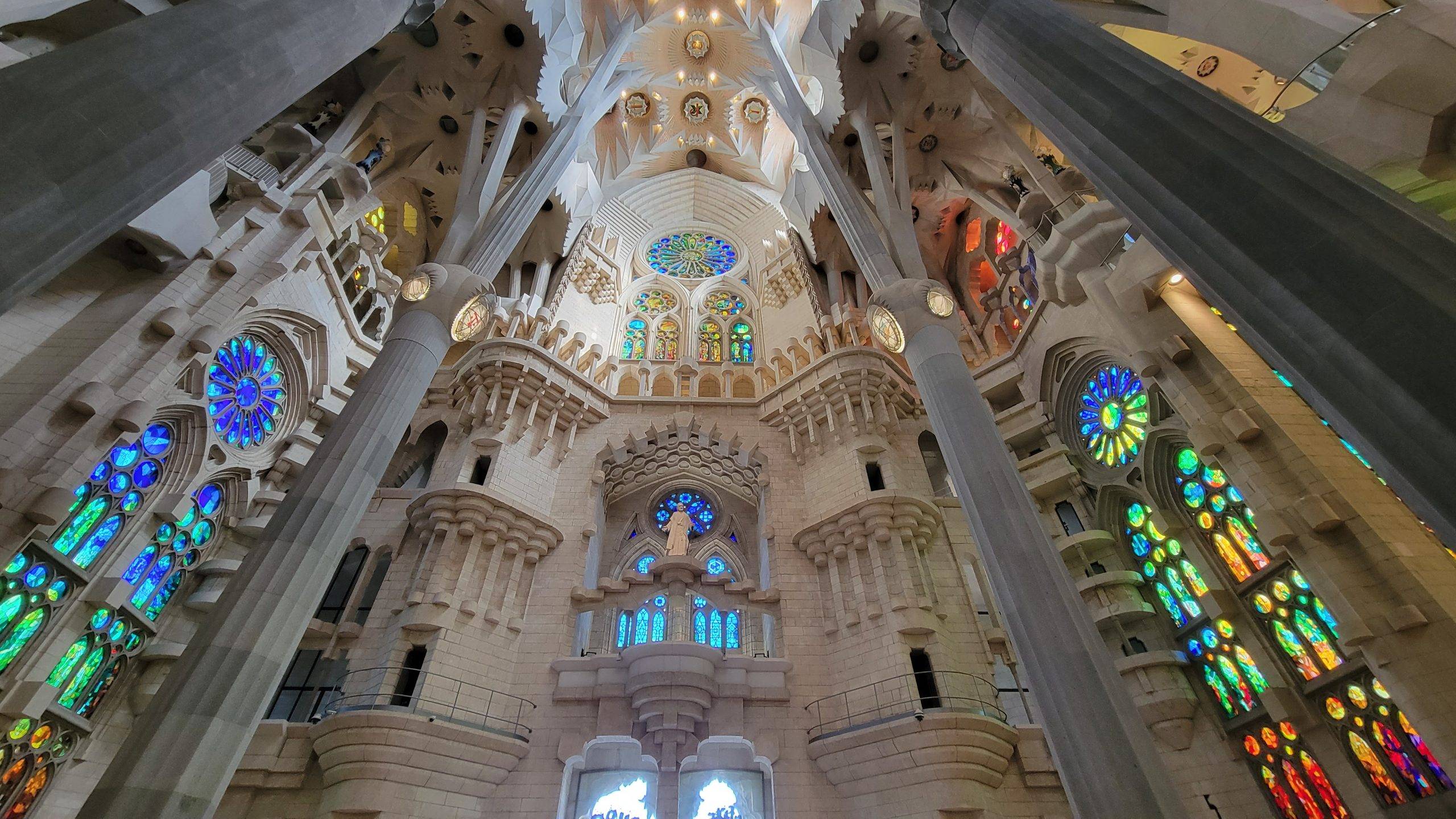
Book tickets straight from the website
One of the firm facts I found about La Sagrada Familia is that the lines are crazy, so you should get a “skip the line” tour. Well, turns out all tickets you book on the official website allow you to skip the line at the ticket office because you’re assigned an entry time. It’s not clearly advertised as “skip the line”, unfortunately, so I spent a lot of time checking third-party sites for tours.
I highly recommend you book your ticket straight from the website, especially if you want to visit one of the towers. I only found a couple of outside tour options that included a tower visit, and times were limited.
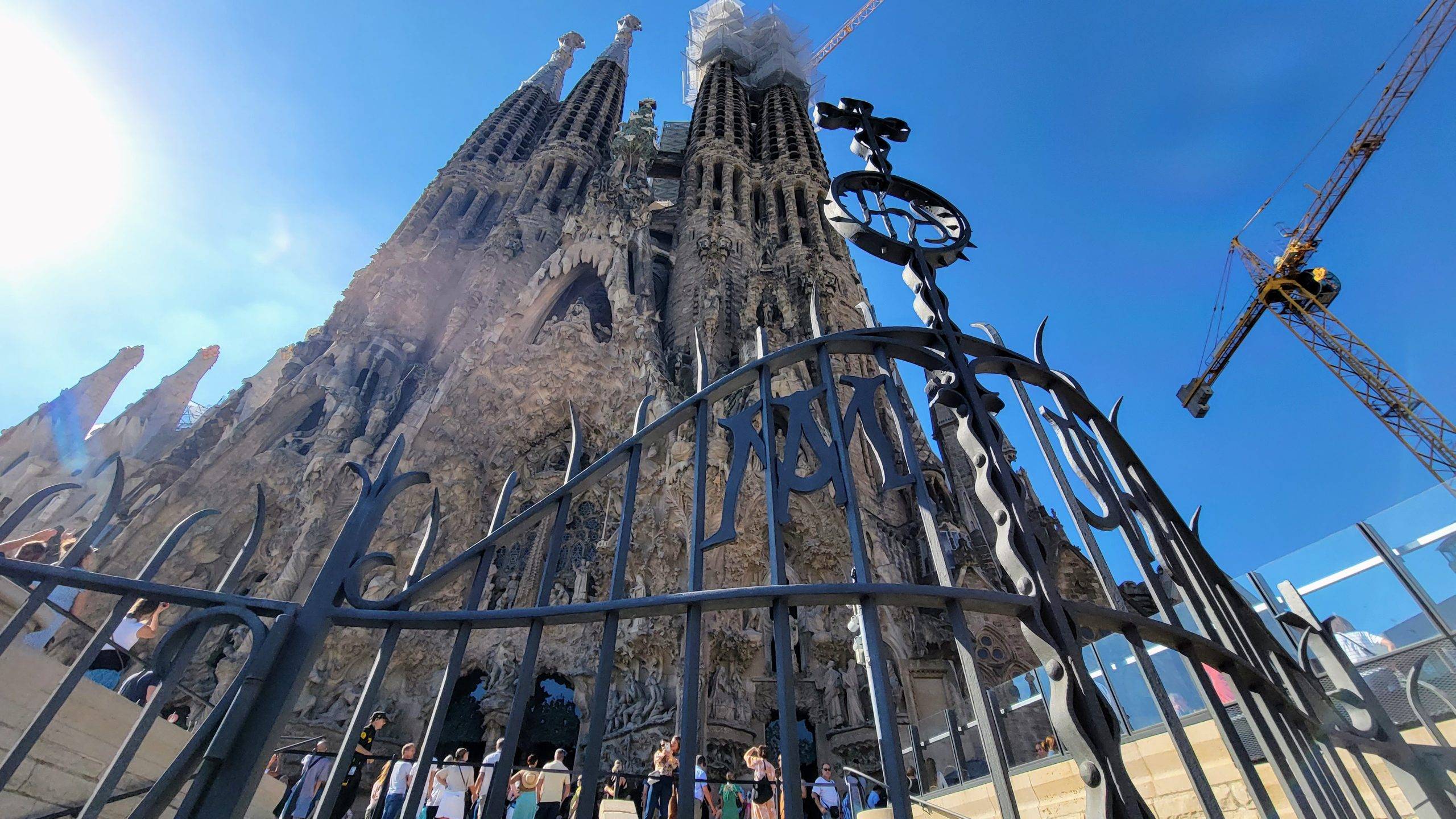
Additionally, the prices seem to be better on the website than the third-party sites. A basic tour is 26 euros, a guided tour is 30 euros, and a guided tour with tower access is 40 euros. (I saw third-party tours without tours listed at 49 euros.) And if you’re under 30, you even get a discount just for being “young.” Whoo-hoo!
With an official site ticket, you can walk to Gate C 15 minutes before your tour and get right to the security checkpoint.
Upgrade to the in-person guide
There is so much detail at La Sagrada Familia that it can be overwhelming. Self-guided tours come with a 45-minute audio guide, but it’s worth the 4 extra euros to get a personal guide to answer your questions. Each person even gets a little radio and headphones so you can always hear your guide, even if you get a bit behind.
Go in the morning
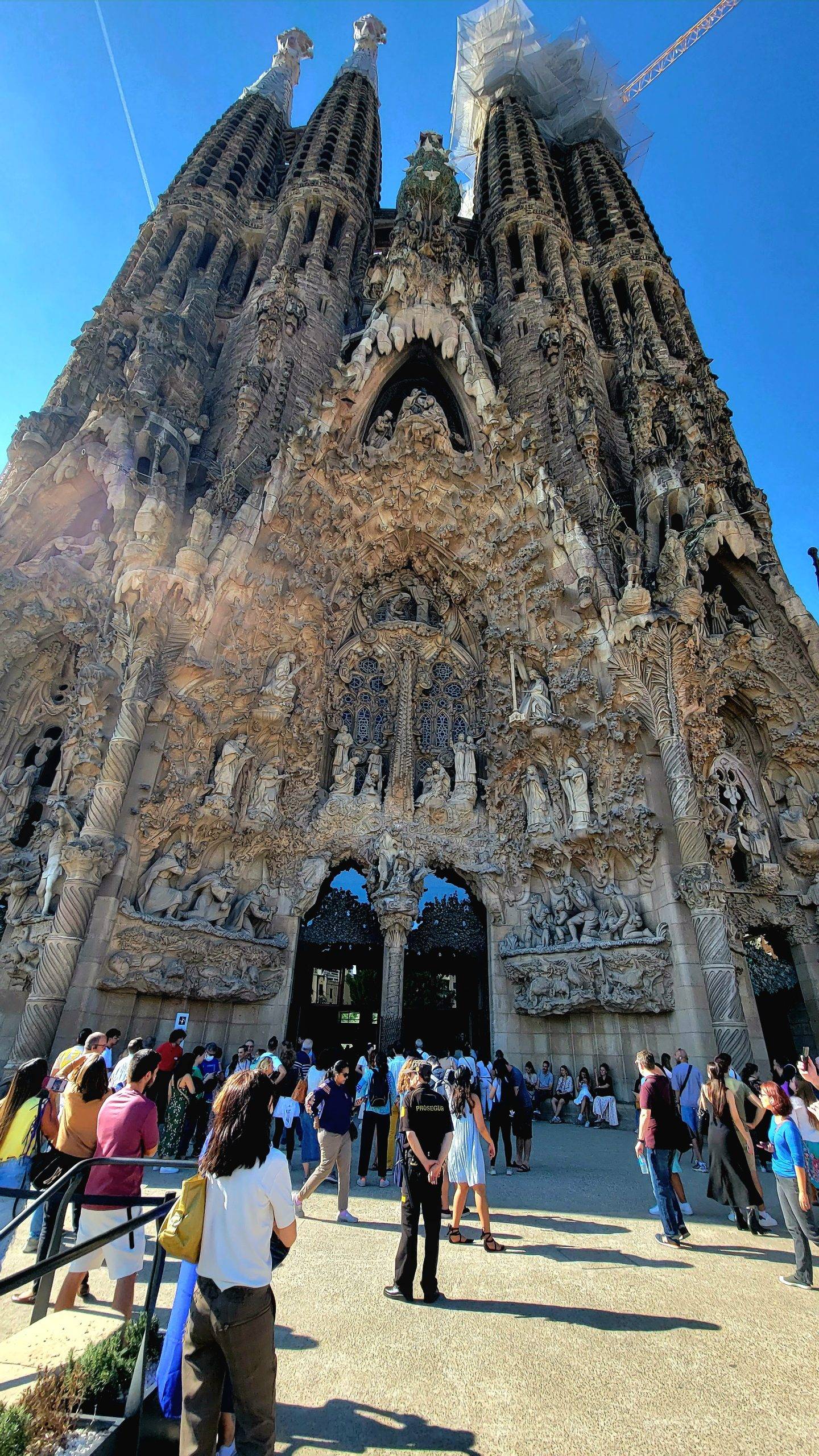
I had no idea how crazy the La Sagrada Familia would be in the “off-season.” The mass of people on the Nativity patio was a bit overwhelming, and it definitely detracted a bit from the beauty of the scene. I’d recommend going earlier than later to avoid the afternoon crowds.
Bring your own water
Free water is scarce in Barcelona, including La Sagrada Familia. If you think you’ll get thirsty in that two hours, be sure to bring a bottle of water with you because it will be hard to find on-site.
Show up 15 minutes before your tower time
Don’t cut anything short, but if you’re just waiting around, feel free to show up to your selected tower a few minutes earlier than the ticket says. I was so glad we did because the line grew substantially at 1:45 when we were supposed to show up. Even then, it took over 30 minutes for us to get on the elevator up to the towers, another 25 to tour them, and about 10 minutes to walk down.
Take lots of pictures

Yes, pictures are allowed inside La Sagrada Familia during tours. Be respectful, but feel free to take lots of pictures and videos (minus flash) on your phone. We had our DSLR camera as well, but because the sanctuary is rather dim, our phones were able to take much better pictures.
Bring a Euro for lockers
If you want to go up the towers, you will not be allowed to bring any big bags with you. Instead, you’ll need to leave them in a locker at the base of the tower. These require 1 euro to use, so make sure you have a spare on you!
Quick Overview of La Sagrada Familia
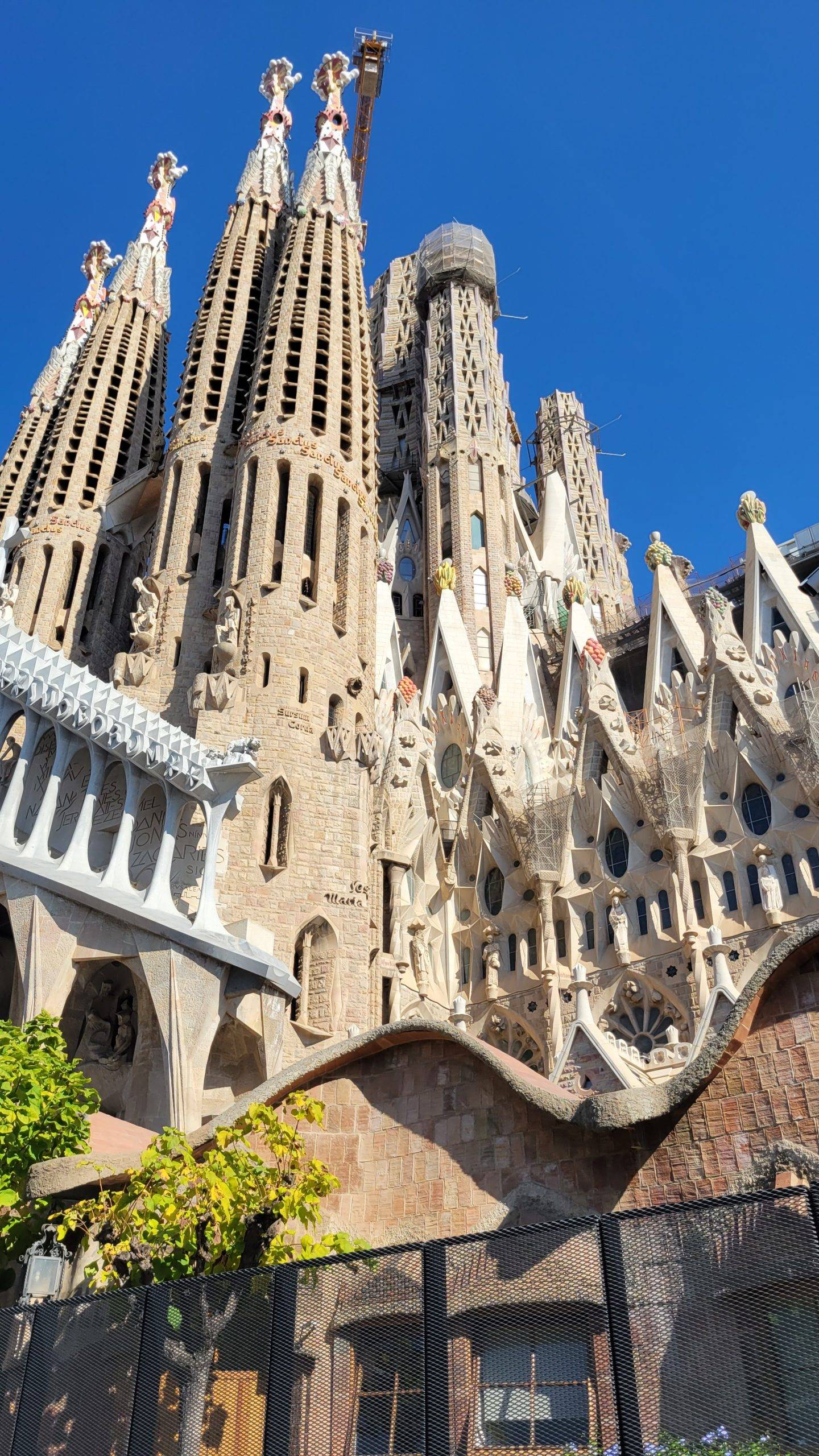
At first glance, La Sagrada Familia looks like a castle pulled straight out of a children’s fairy tale. There are spires, statues, carvings, and colors everywhere you look! While Catholic Churches tend to be lavish, this basilica takes things up several levels. But that makes sense because Antoni Gaudi never did things small.
Antoni Gaudi, the architect behind La Sagrada Familia, was very in-demand in Barcelona back in the day for his whimsical and colorful designs that stood out against the traditional European buildings of the city. He was especially popular with the Spanish bourgeoisie, who wanted their homes to be extra fancy.
Gaudi’s old teacher, Francisco de Paula del Villar, was initially assigned to design the new basilica. But when he passed away, Gaudi took on the project and started making changes–a lot of them. For example, he upgraded from just a couple of towers to 18! And from there, he just went all out.
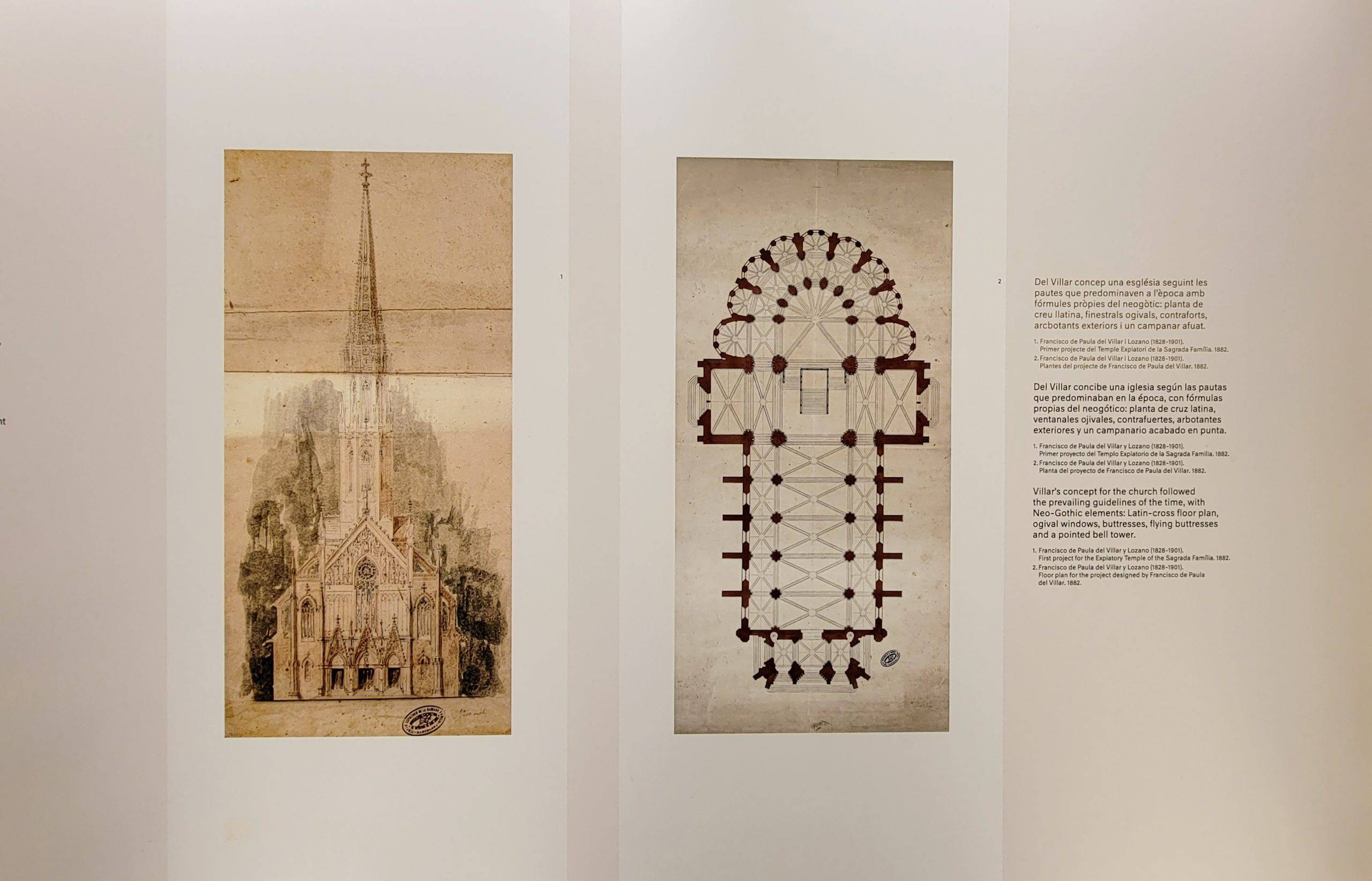
While at first glance, there may not seem to be any rhyme or reason to the extravagant design, every detail has a meaning. It’s really mind-blowing when you try to comprehend how much thought Gaudi put into it!
But more on that in a second.
The La Sagrada Familia has four parts to check out on your visit: the exterior, the interior, the museum, and the towers. For more details on each section, check out the more comprehensive guide below.
TLDR: Watch Our YouTube Video!
The Exterior of La Sagrada Familia

The Nativity Facade
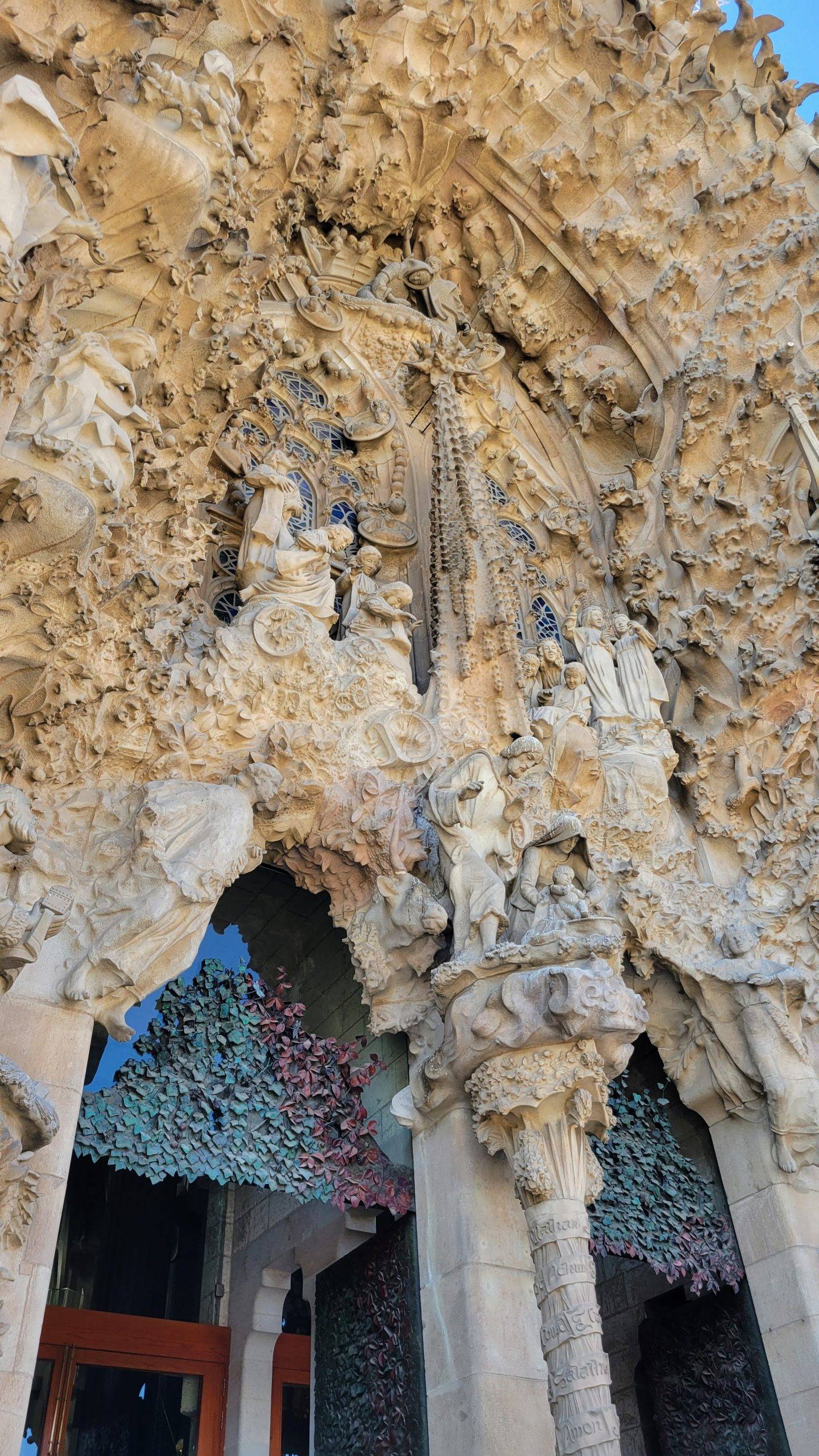
Every guest starts their journey on the steps of the Nativity facade on the east side of the basilica. This side entrance is covered in carvings and statues depicting the Nativity and Christmas. Everything is very happy and joyful in celebration of Christ’s birth. (At least, aside from a section showing Roman soldiers executing all the babies under two years old.)
Metal leaves cover the doors on this side; if you pay attention, you’ll see all sorts of bugs and lizards worked into the design!
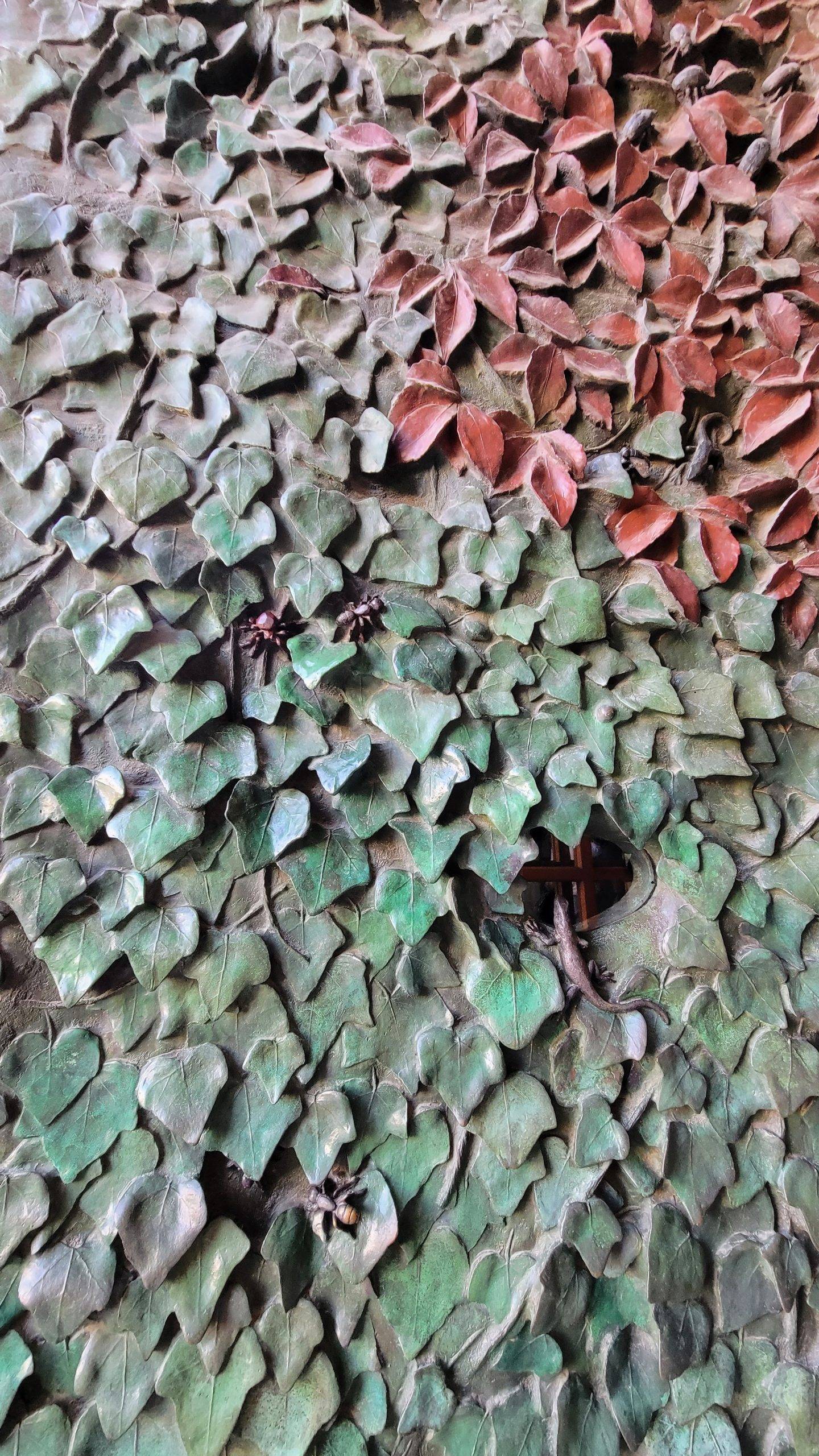
We found it very interesting that you can clearly see a difference in the ages of the stones on this side. After all, the basilica has been under construction for 140 years! You can see that the stones on the entrance are darker than the newer ones on the adjoining wall.
From this side, you can clearly see the recently finished Mary Tower (2018), which is an architectural gem on its own. The tower is topped with a 12-pointed glass and steel star that shoots sunlight down into the sanctuary with the help of some angled windows. At night, the star lights up so that it is always shining light into the world.
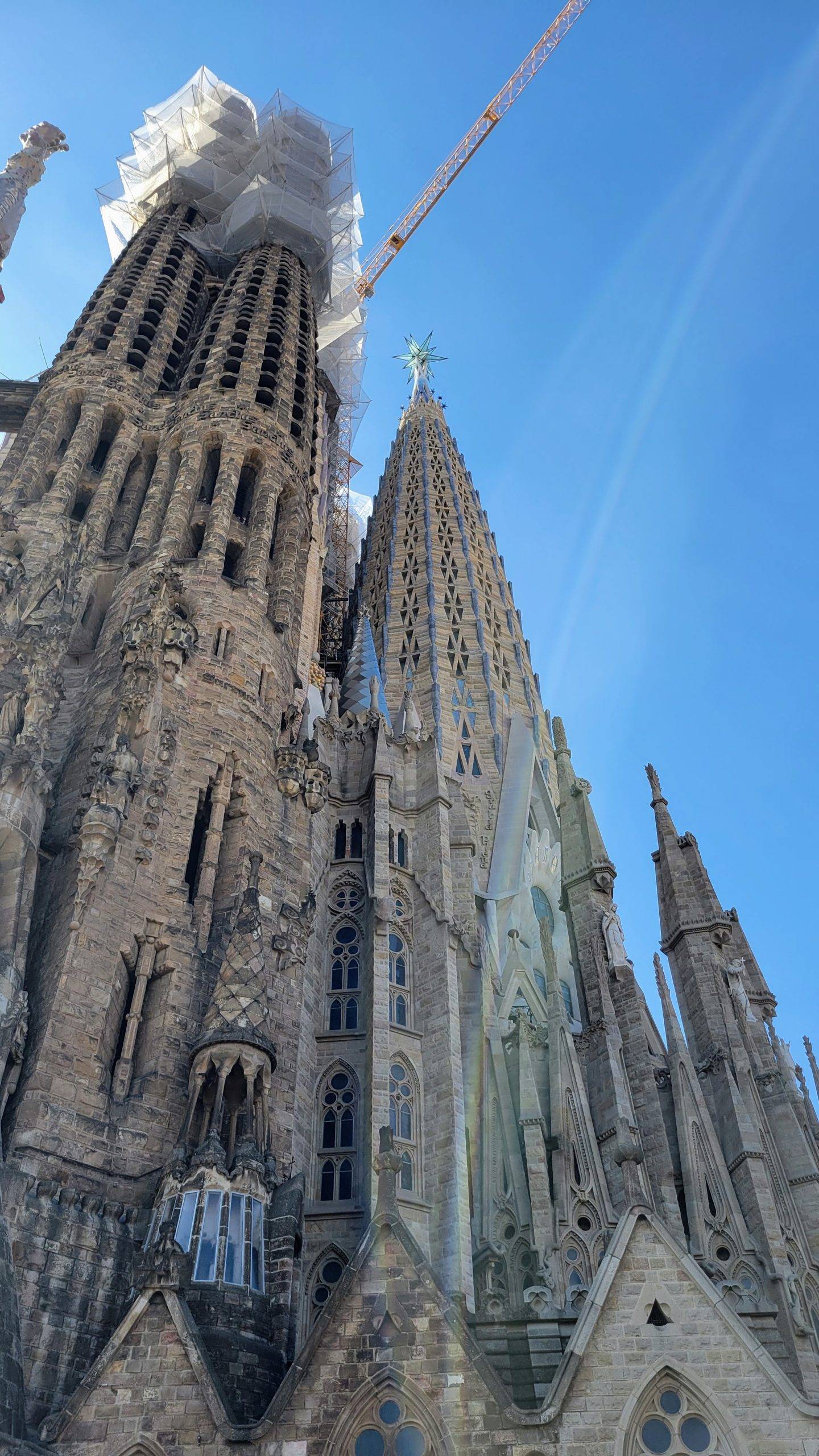
Fun fact: The central tower is still under construction, but when it’s finished, it will be the 2nd highest point in Barcelona–second only to Montserrat Mountain. Gaudi didn’t want his design to be taller than God’s creation, so he designed the tower to be precisely half a meter shorter than Montserrat!
The Passion Facade
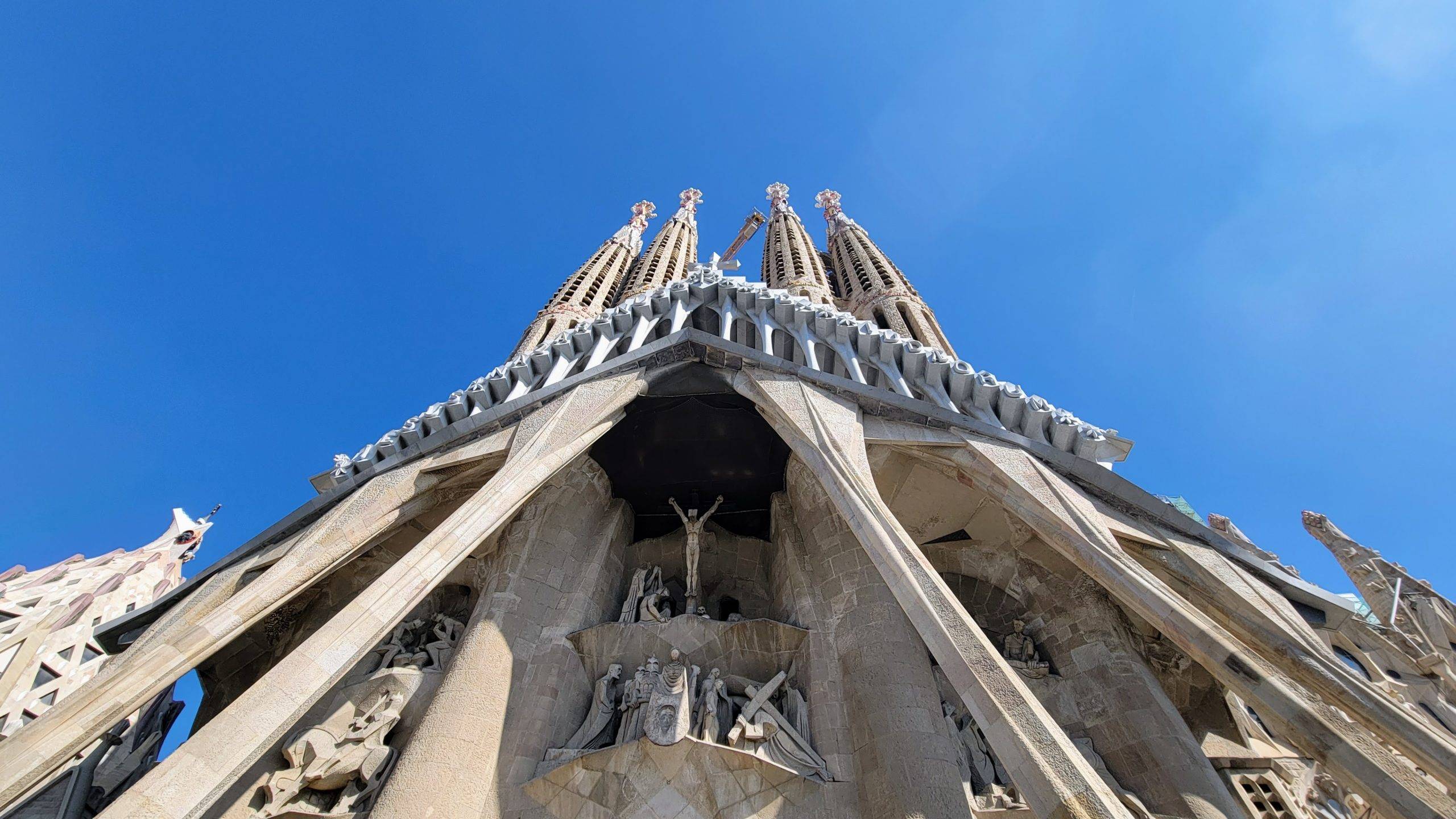
On the west entrance of La Sagrada Familia, the carvings switch from happiness to sorrow. This is the Passion entrance, and it depicts the crucifixion of Christ. There are statues showing Judas’ kiss, Christ carrying his cross, soldiers betting on Christ’s clothes, and people weeping at the foot of Christ on the cross.
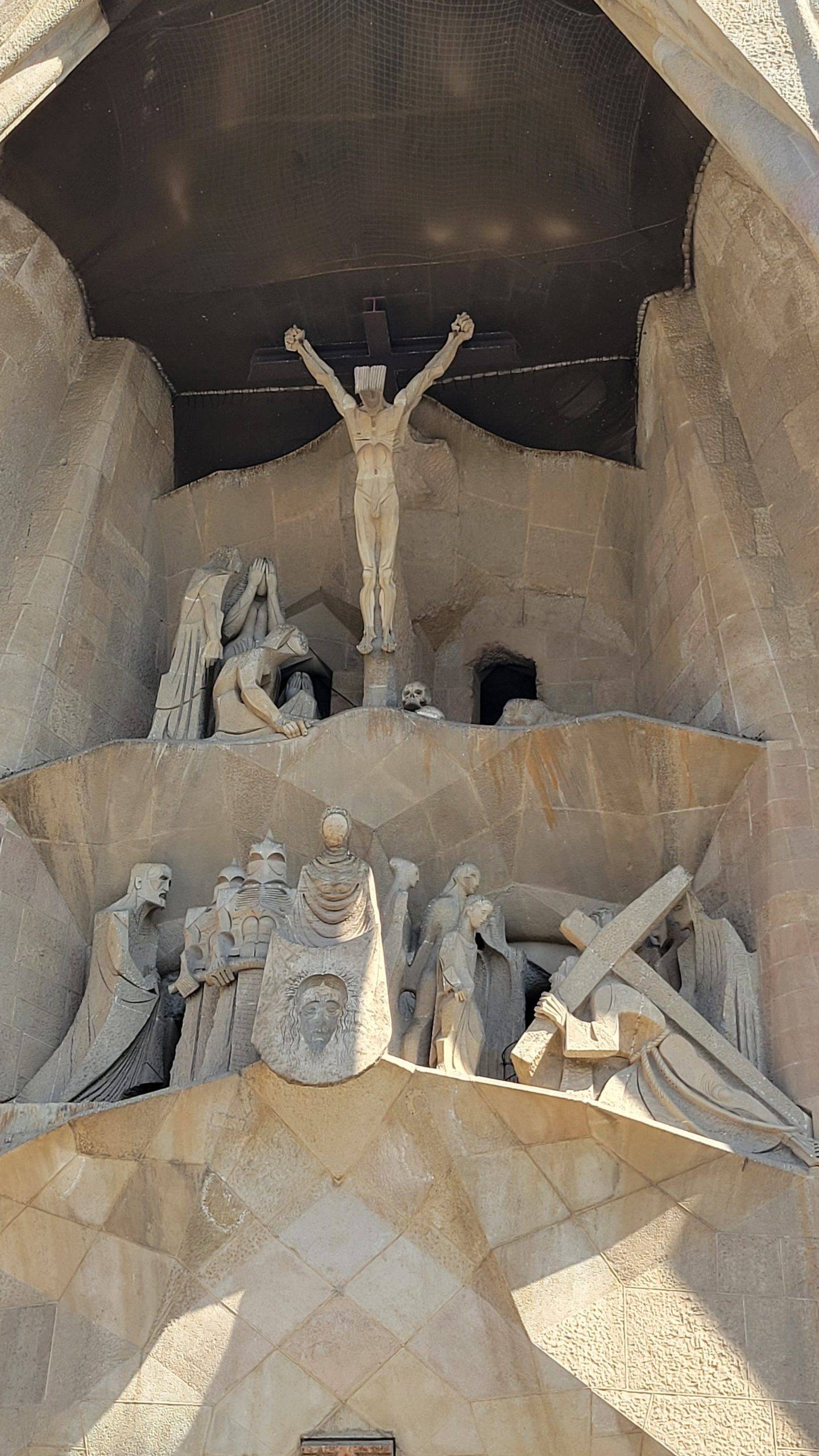
The statues here also have a much different design to those on the Nativity side. The designs are very harsh and blocky, a signature style of Josep Maria Subirachs. You’ll also see his work inside, with a statue of Saint George that looks down on the main entrance.
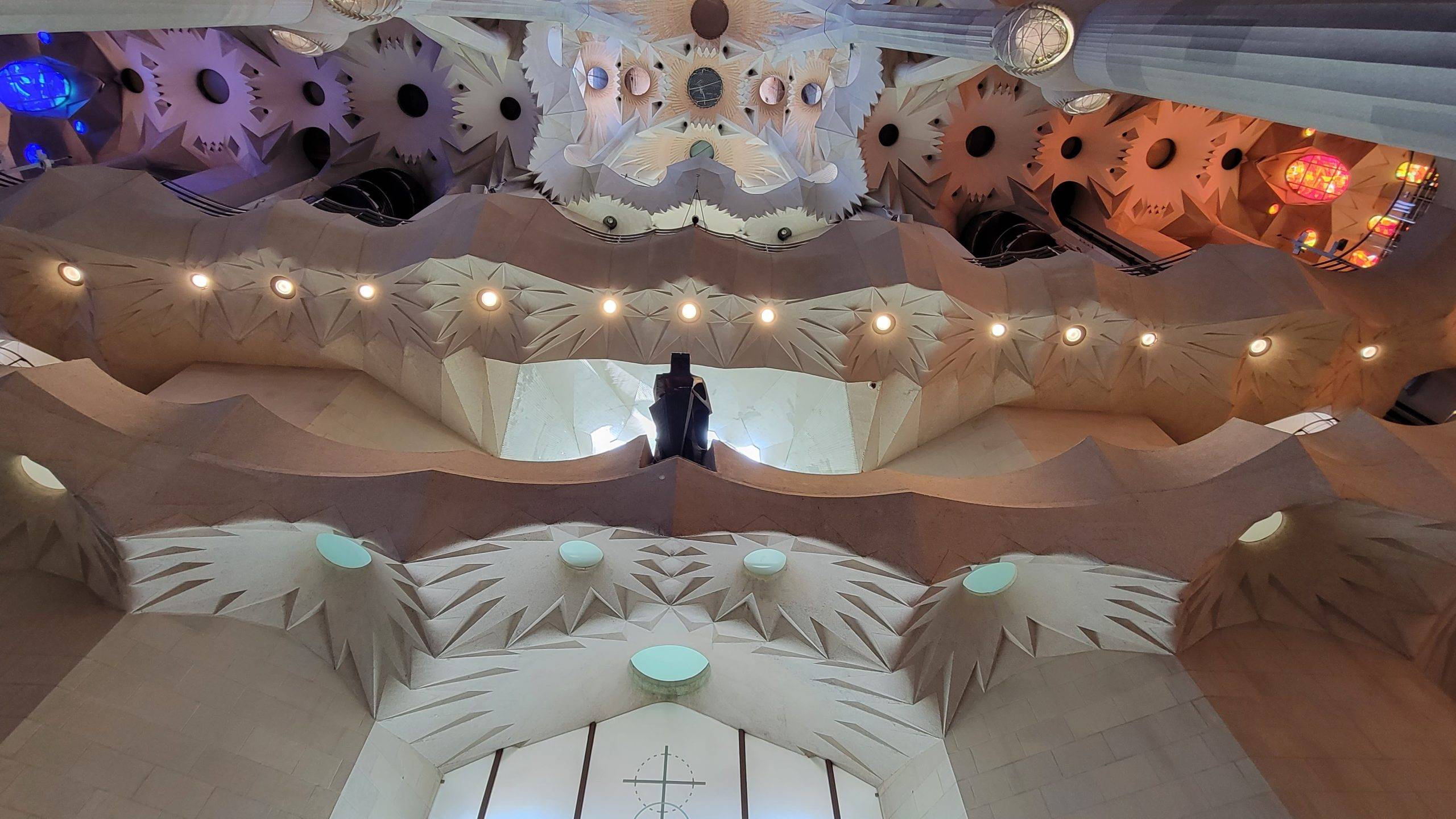
Fun Fact: Josep Maria Subirachs created another statue of Saint George, which looks onto the square at Monsterrat Monastery.
And unlike the colorful leaf doors of the other entrance, the doors on this side are dark and carved with words like Jesus, Crucifica, and Pilat, all relating to the crucifixion.
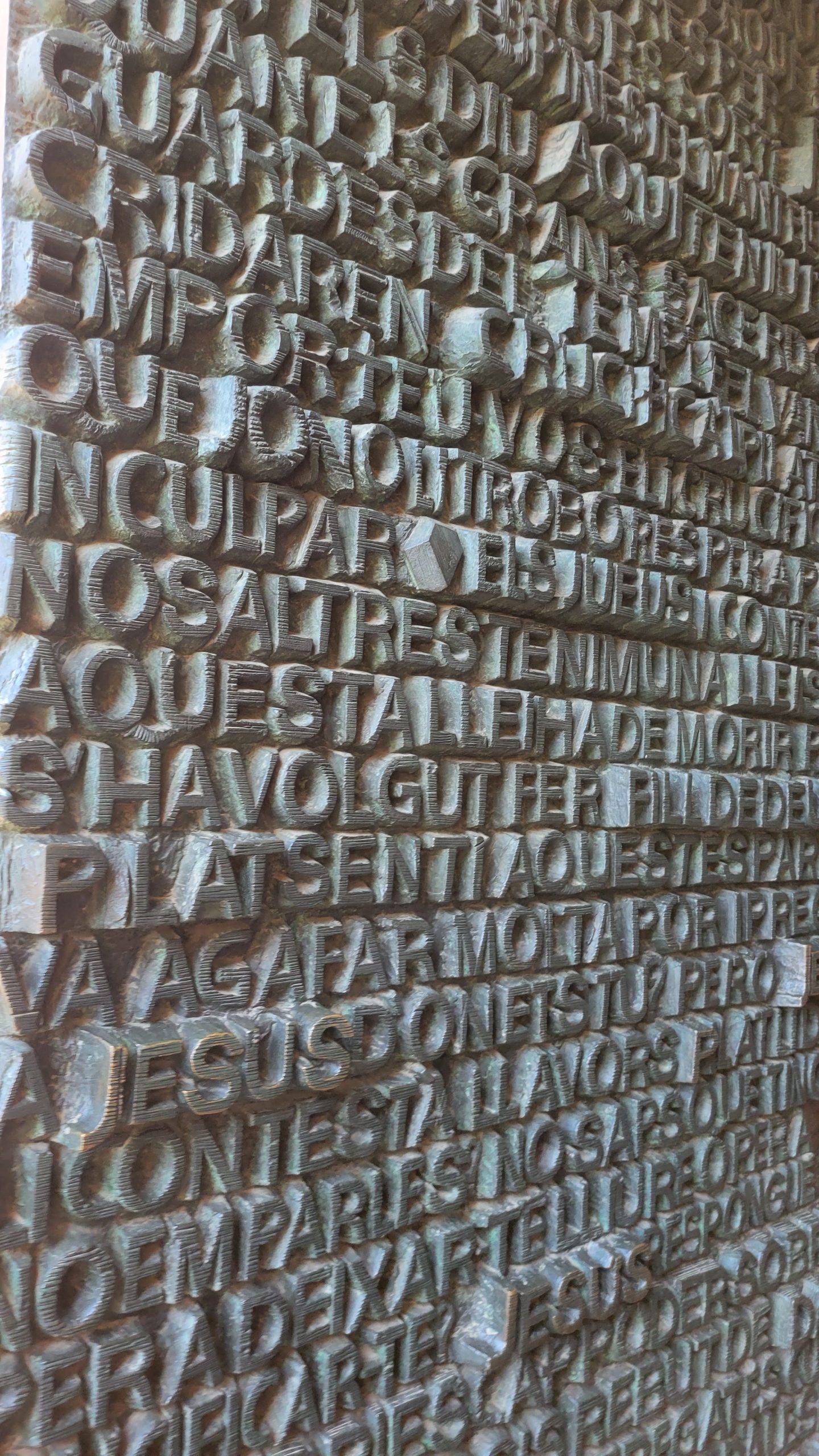
The Glory Facade
The basilica’s Glory side (the main entrance) is not yet complete, but you can get a glimpse of it from the street. This entrance will be dedicated to the celestial glory of Jesus, with several stages: death, final judgment, and glory.
The Interior of La Sagrada Familia
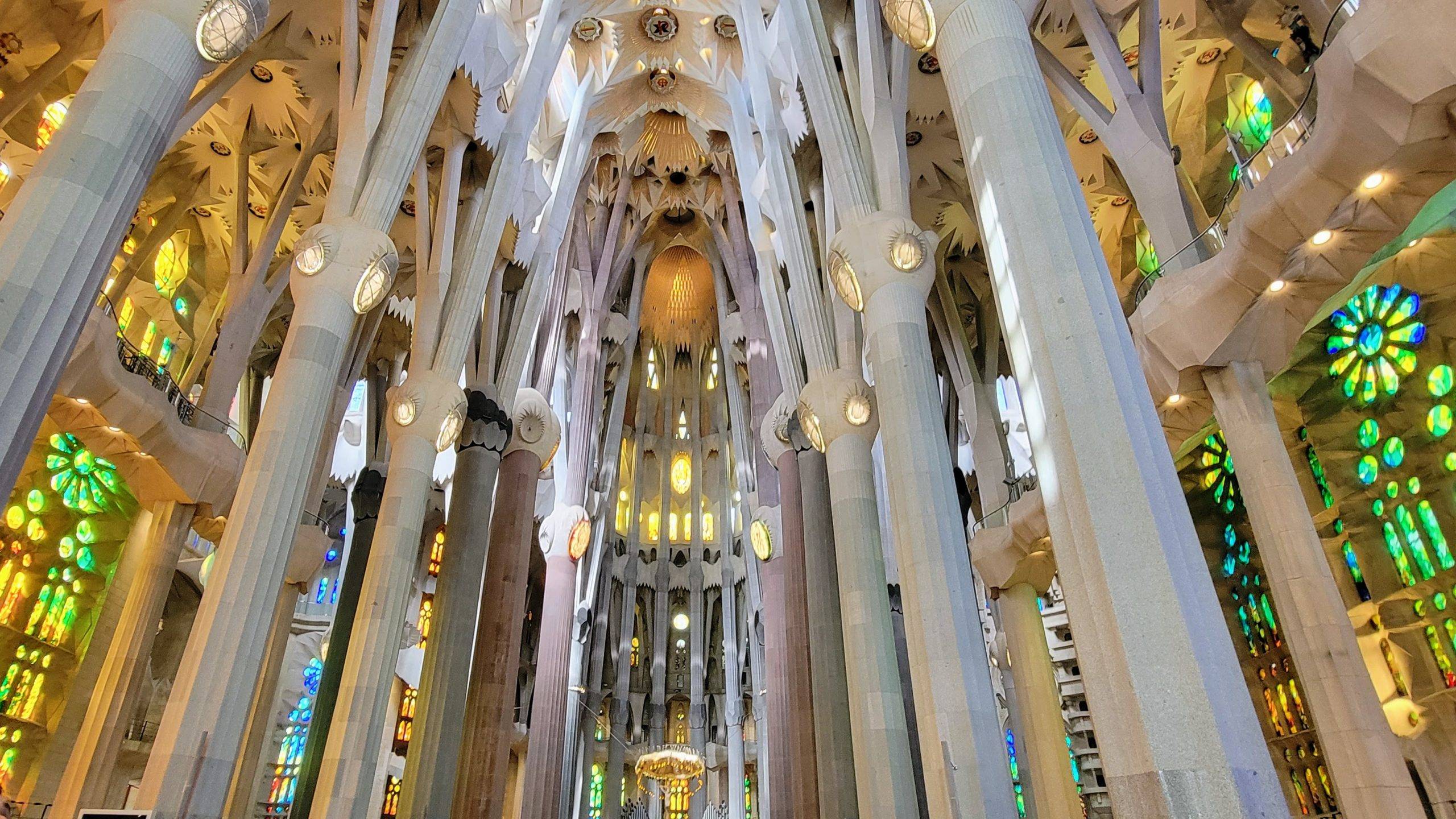
If you thought the outside of La Sagrada Familia was extravagant, wait until you step through the Nativity entrance. The entire basilica perfectly balances white columns and colorful glass and stones.
The first thing you’ll see is a literal forest of columns leading toward the Crucifixion entrance. They soar toward a vaulted ceiling pocked with decorative alcoves. The columns were inspired by trees, which is why they branch out at different angles to support the ceilings. They even have “knots” in the trunks, outfitted with backlit glass, depicting important Catholic symbols.
The four central columns, just in front of the dais, have the names and symbols of four of Jesus’ disciples: Matthew, Mark, Luke, and John.
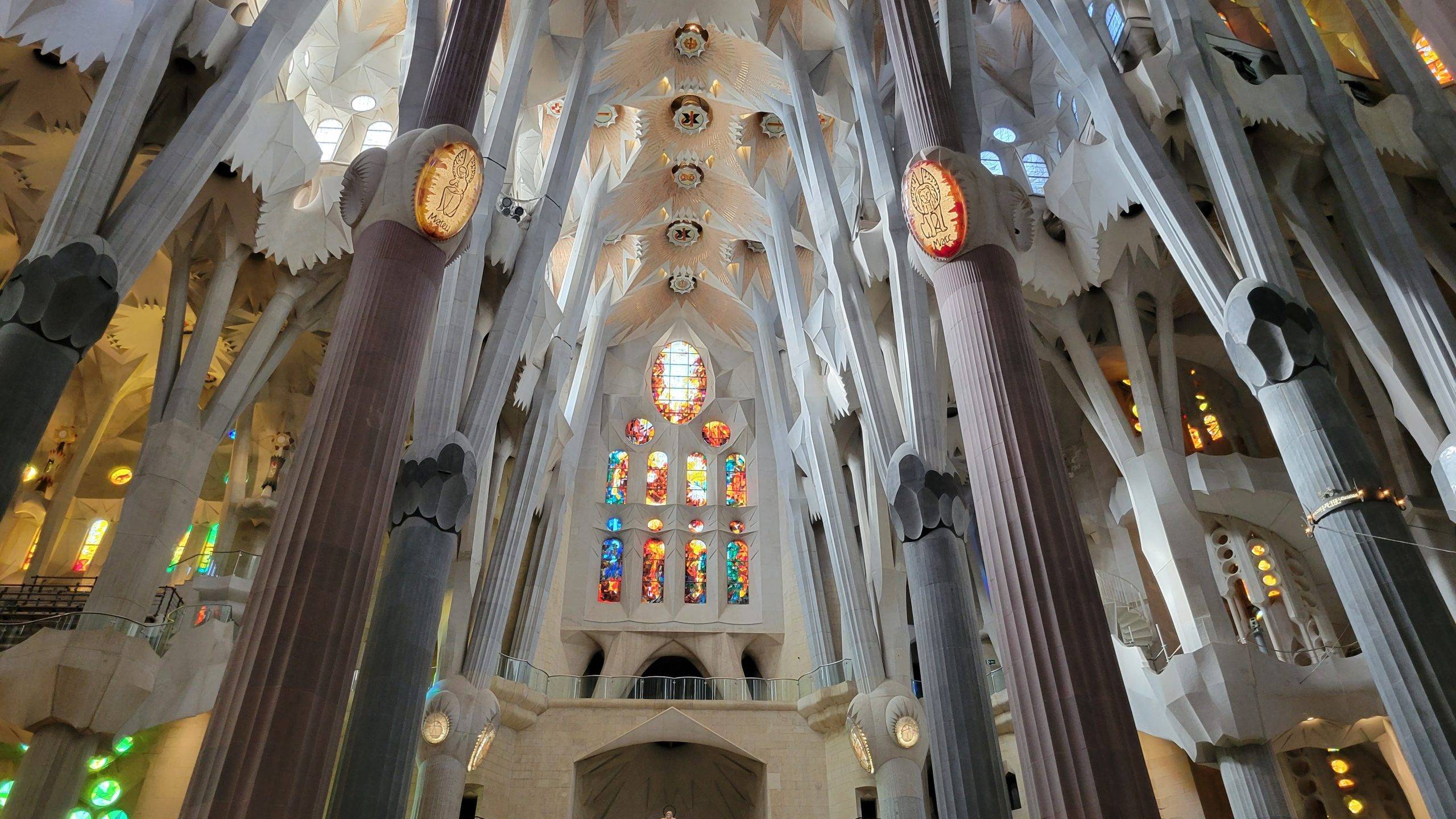
On the far wall, beneath a gorgeous set of stained glass windows, there’s a statue of Mary overlooking the sanctuary from the Passion entrance. If you look behind you, you’ll find a matching statue of Joseph just over the Nativity entrance.
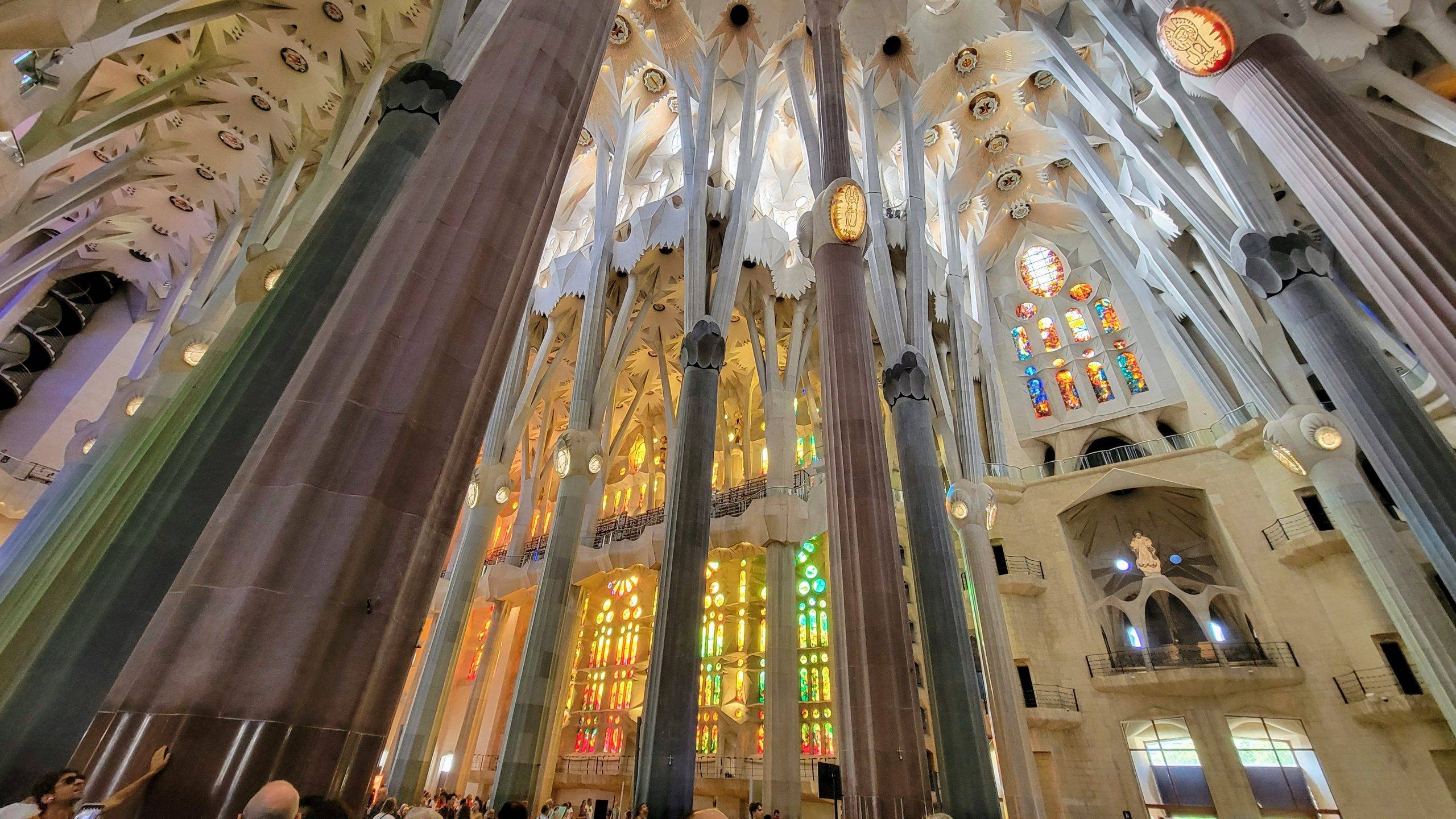
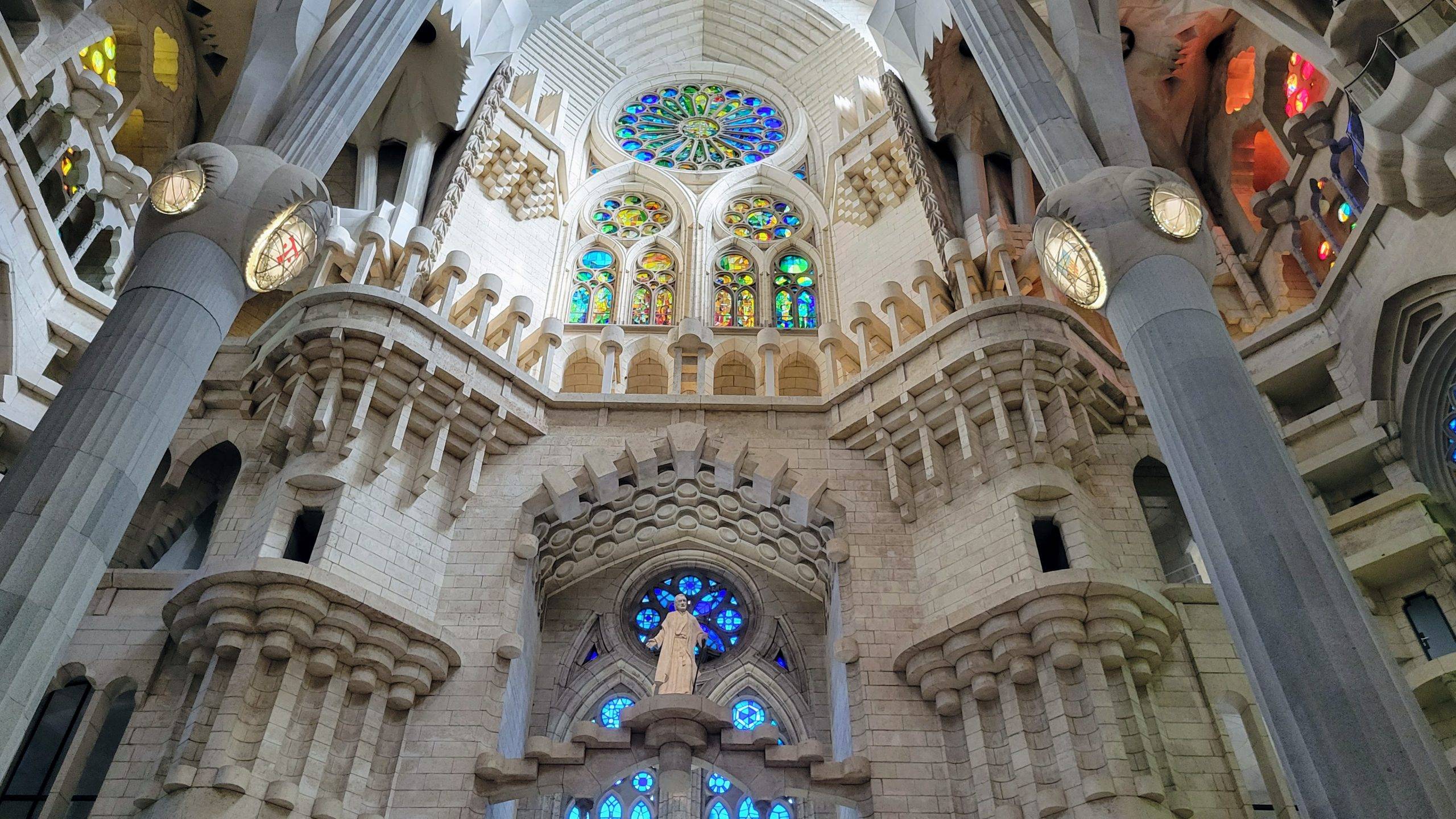
But that’s just the first thing you’ll see!
To your right, a statue of Jesus hanging on the cross is suspended over the central platform, and two large sets of organ pipes sit against the massive columns of the Mary Tower.
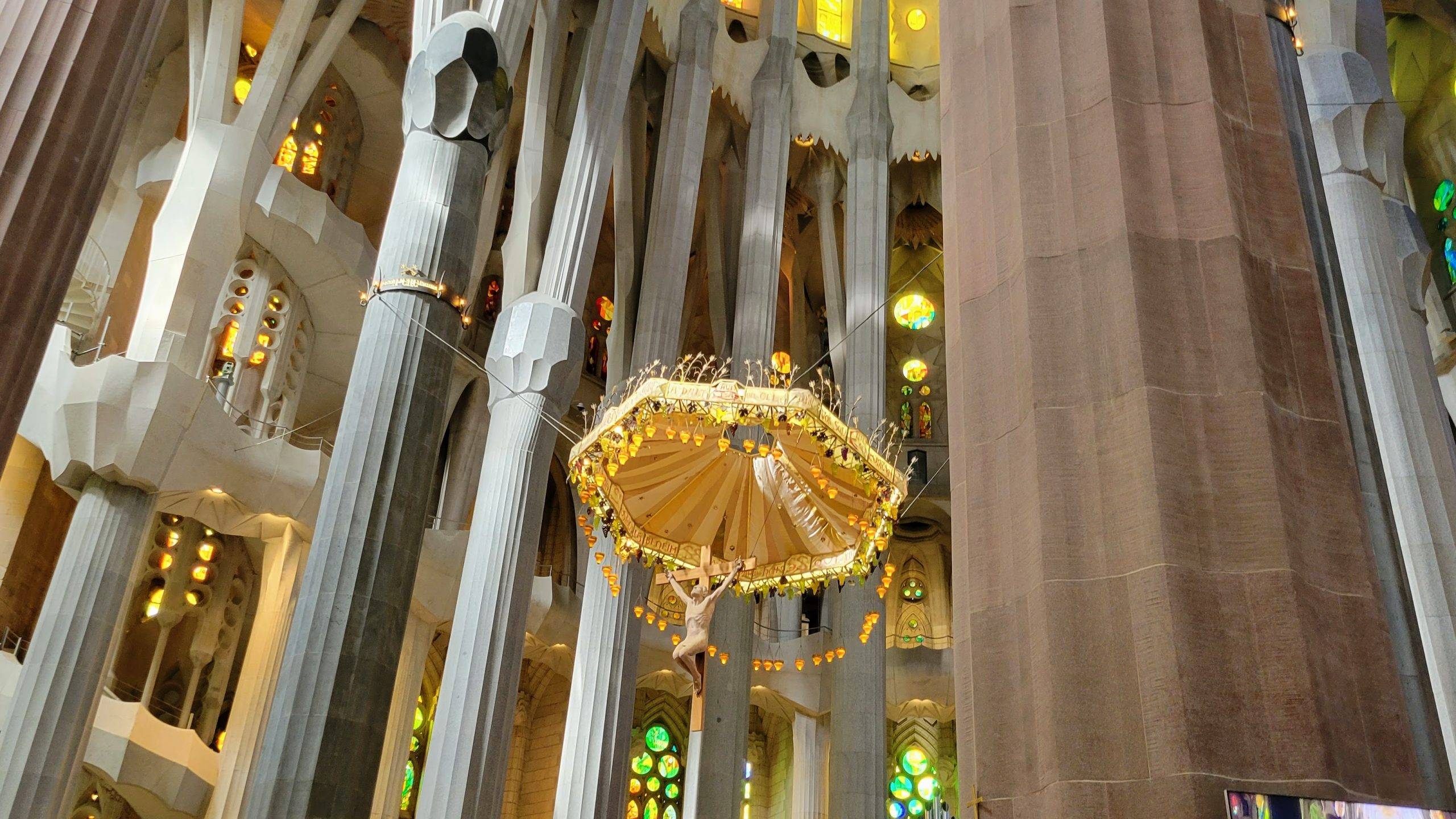
As you work your way into the sanctuary, you’ll see seating for thousands of people. There are wooden benches lined up along the sanctuary floor and on the balcony high above. There is also a choir loft on the balcony, which can hold up to 1000 people! However, it’s only been used to full capacity once, when the Pope came to concentrate the church in 2010.

On the left (east side) are rows of beautiful stained glass windows in blue and green hues—the color ties in with the Nativity facade, symbolizing new life and growth. On the right (west side), the colors are reds and oranges for death and sorrow. The Glory facade window is not yet installed, but it will have a combination of reds and blues.
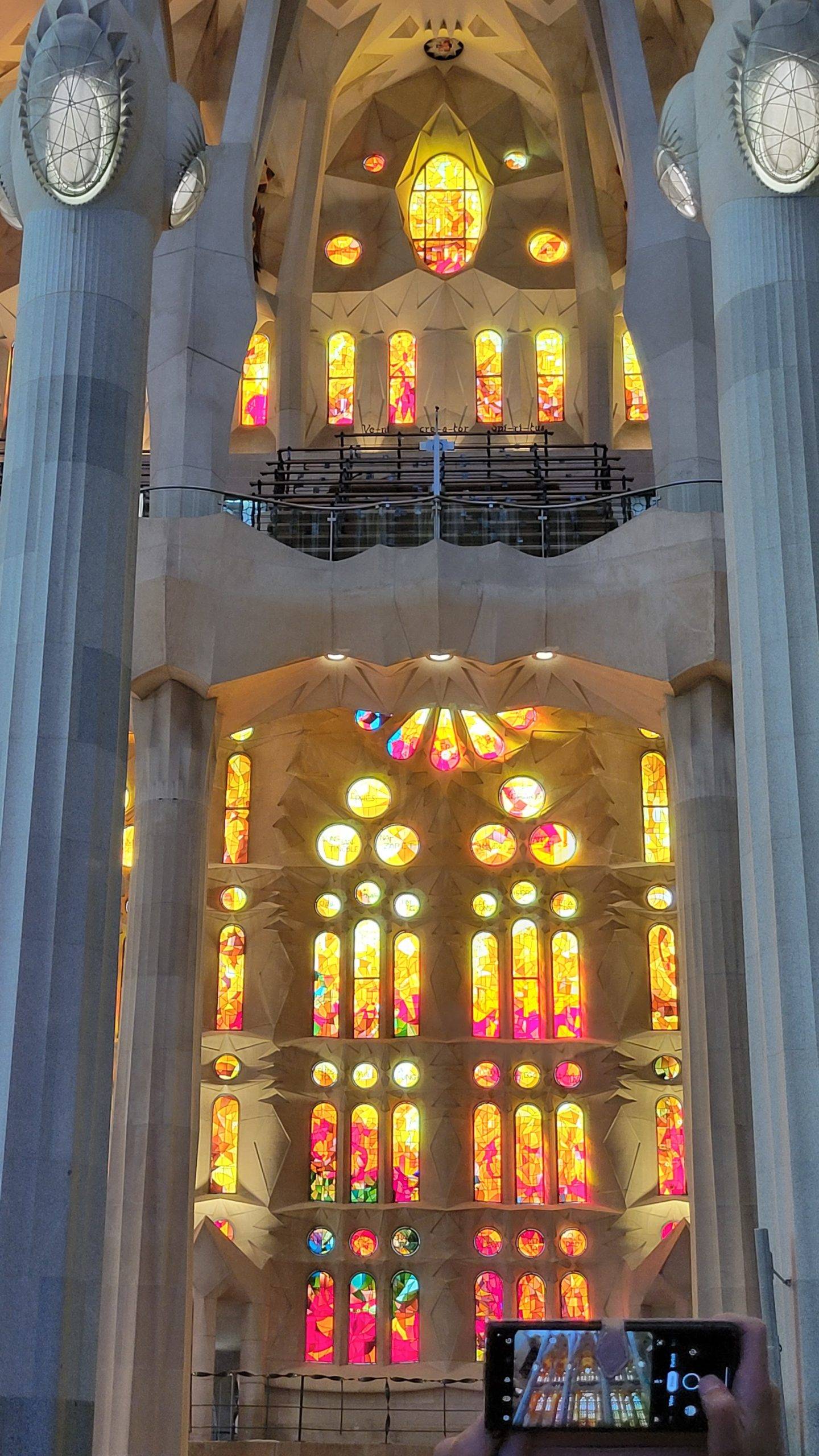
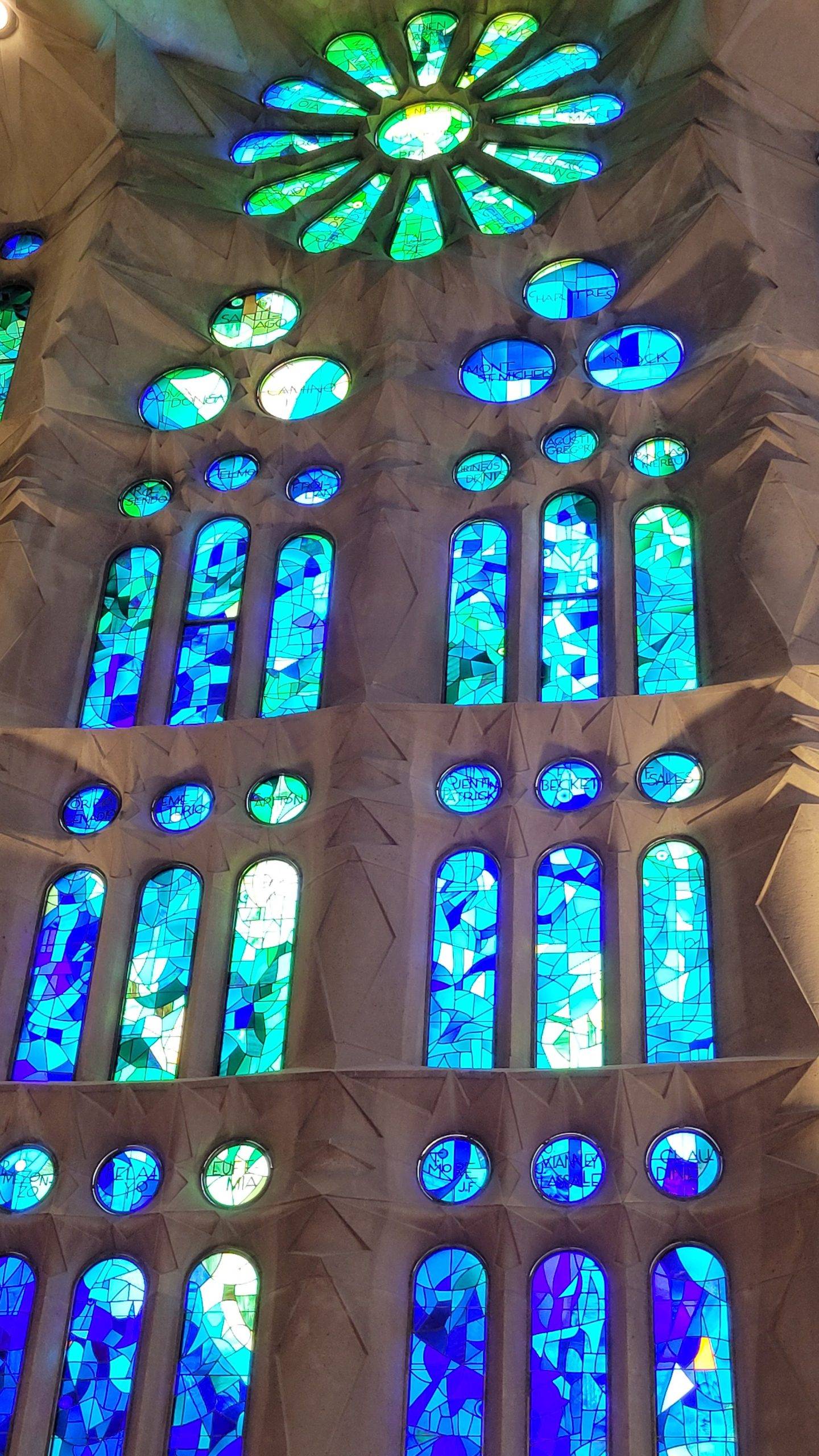
In each of these stained glass windows, names of major Catholic hubs are worked into the design, celebrating churches around the world.
The Museum
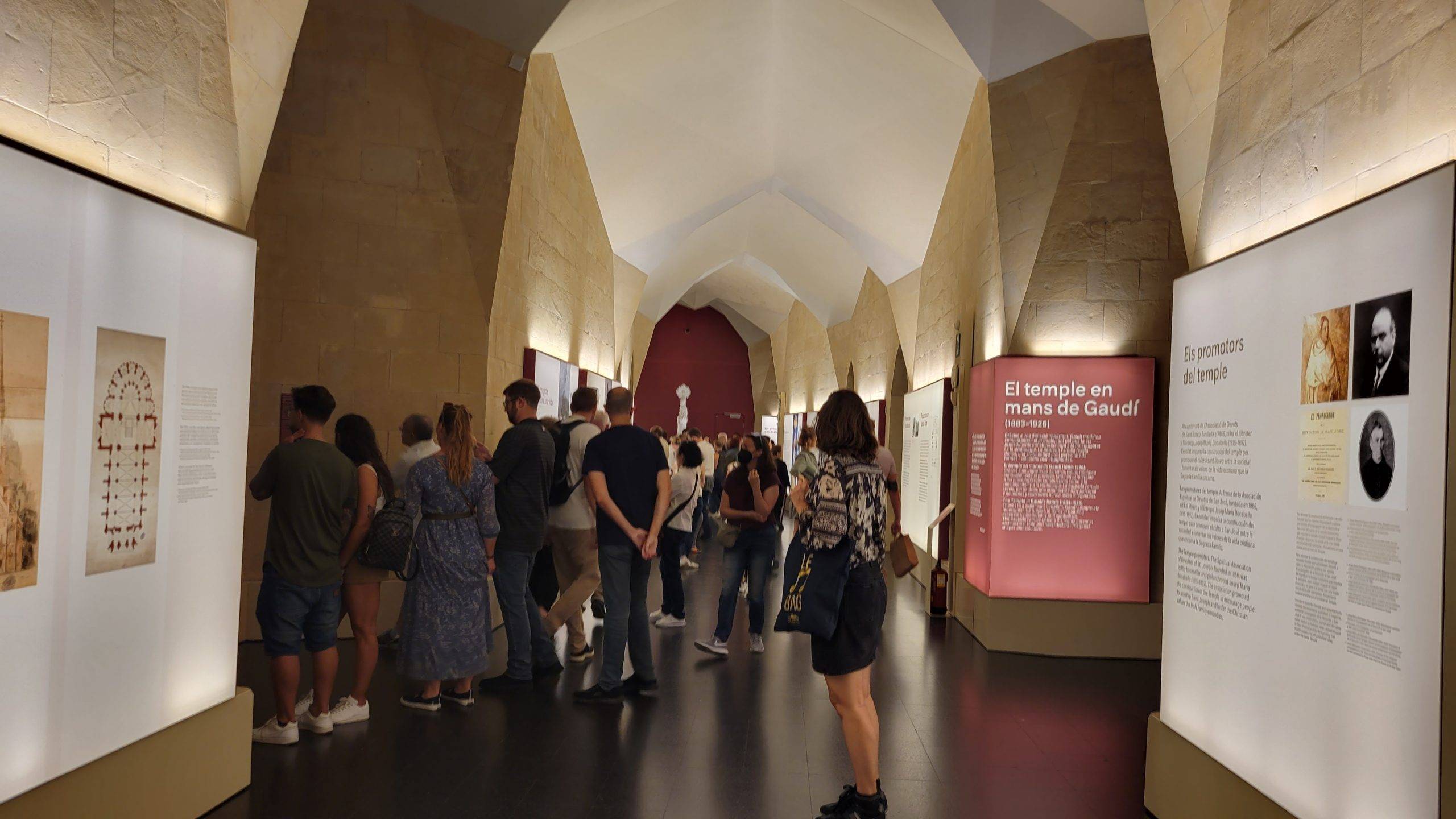
Once you finish touring the sanctuary, you can visit the towers or visit the museum. Since our tower time was 30 minutes away after our tour, we chose to visit the museum beneath the basilica.
This fascinating area is filled with information on the La Sagrada Familia and Gaudi. You’ll see a replica of Gaudi’s workshop, some of his plaster models, and even a comparison of the original design versus the final one.
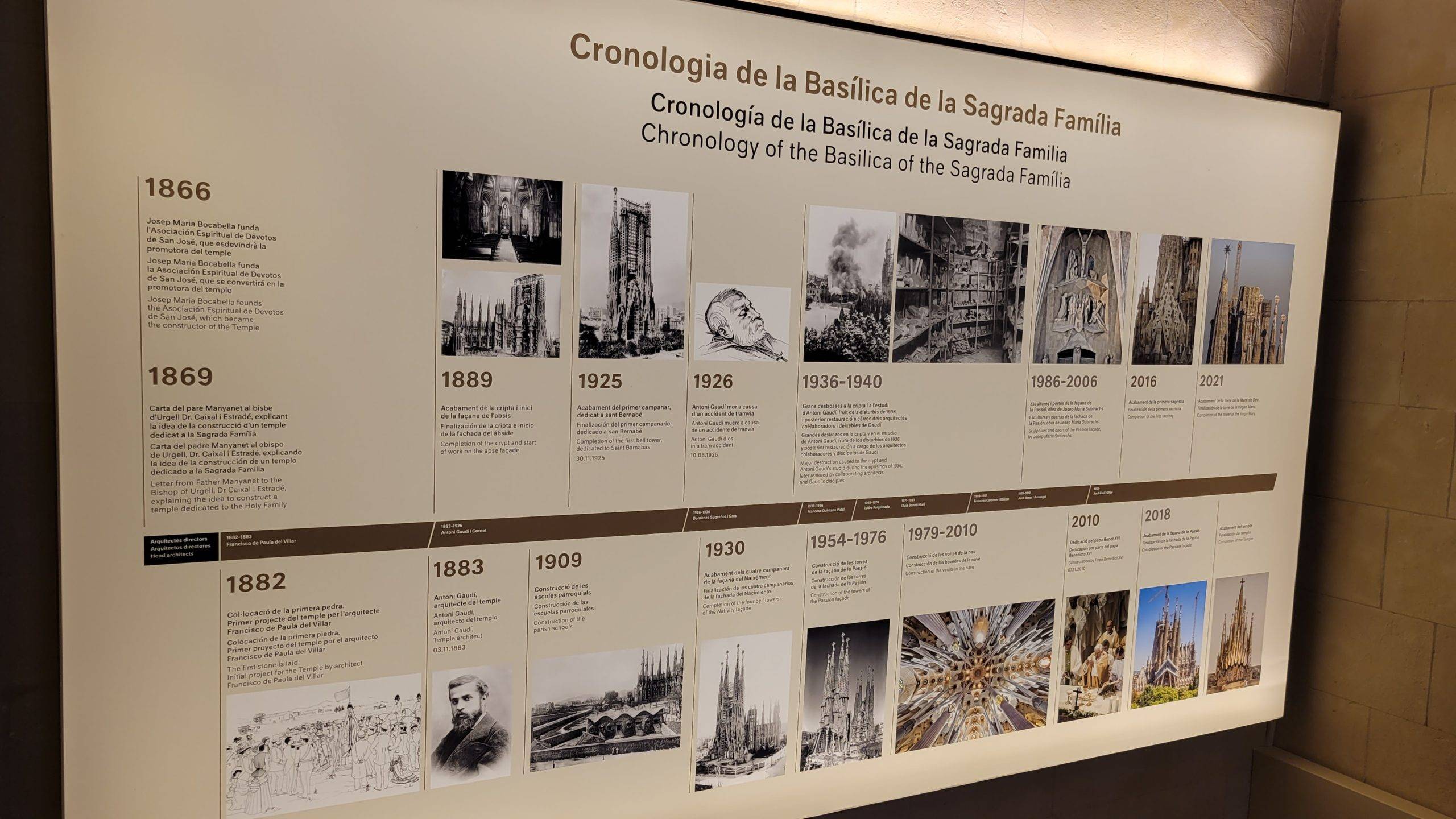
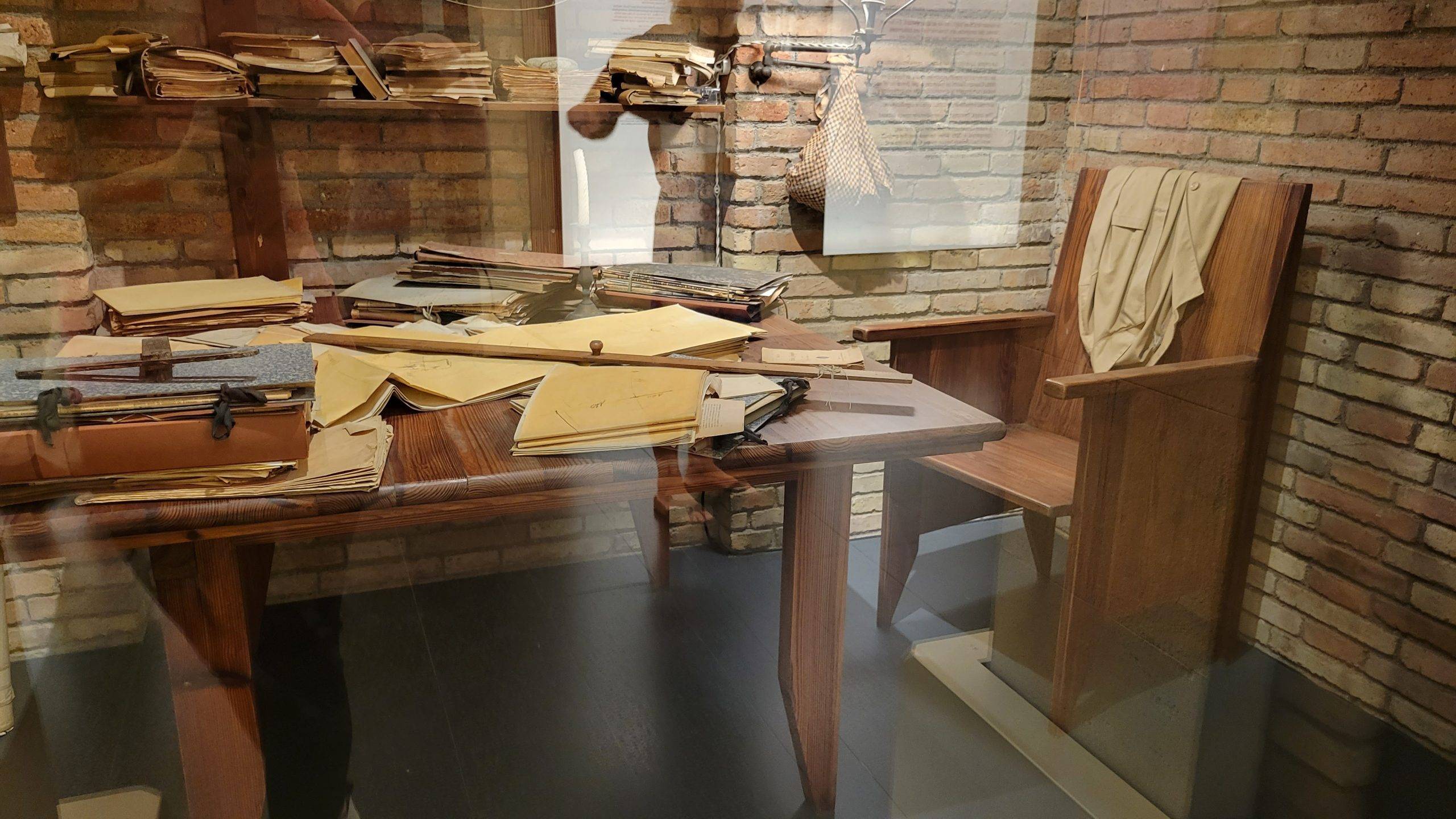
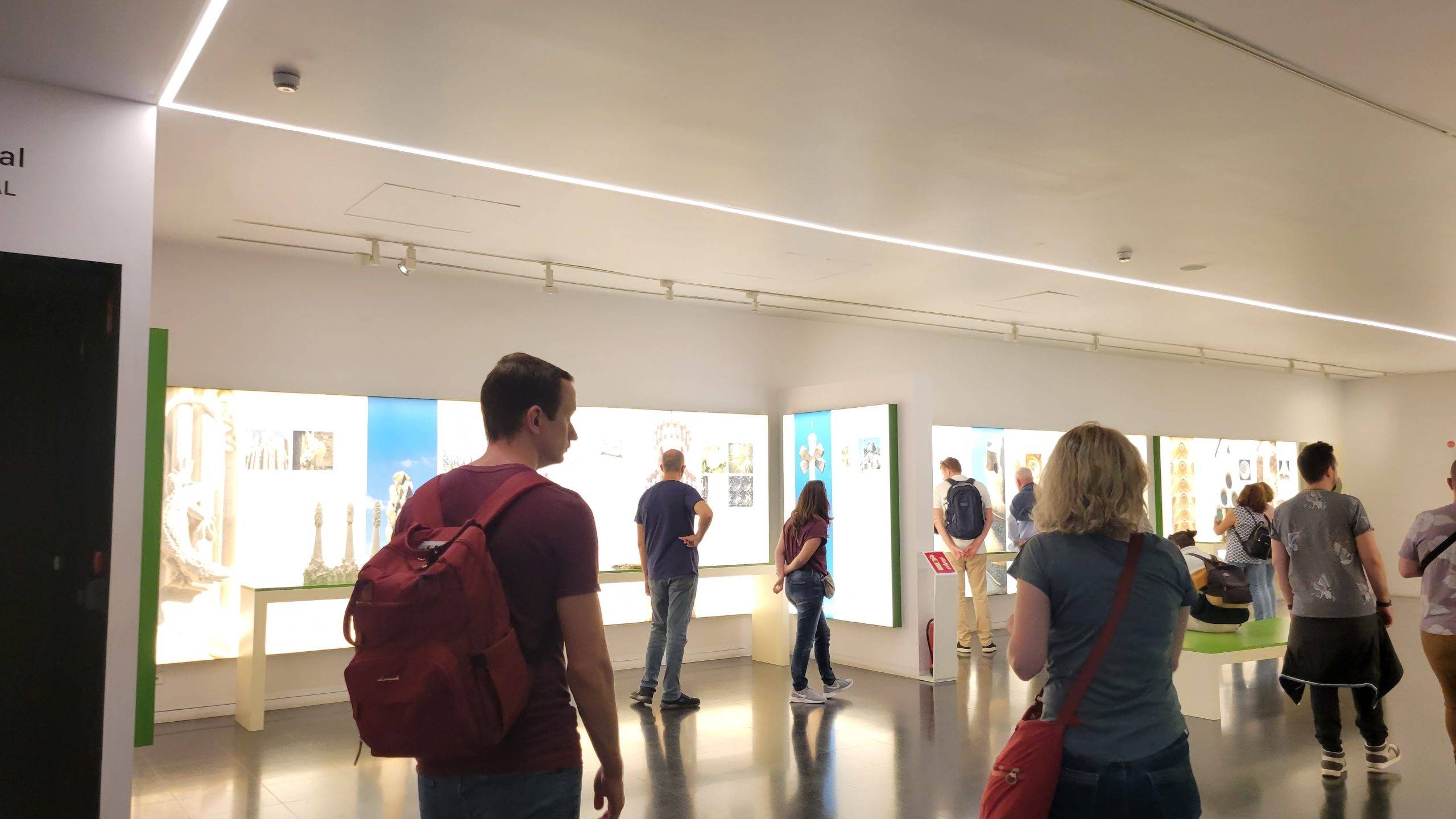
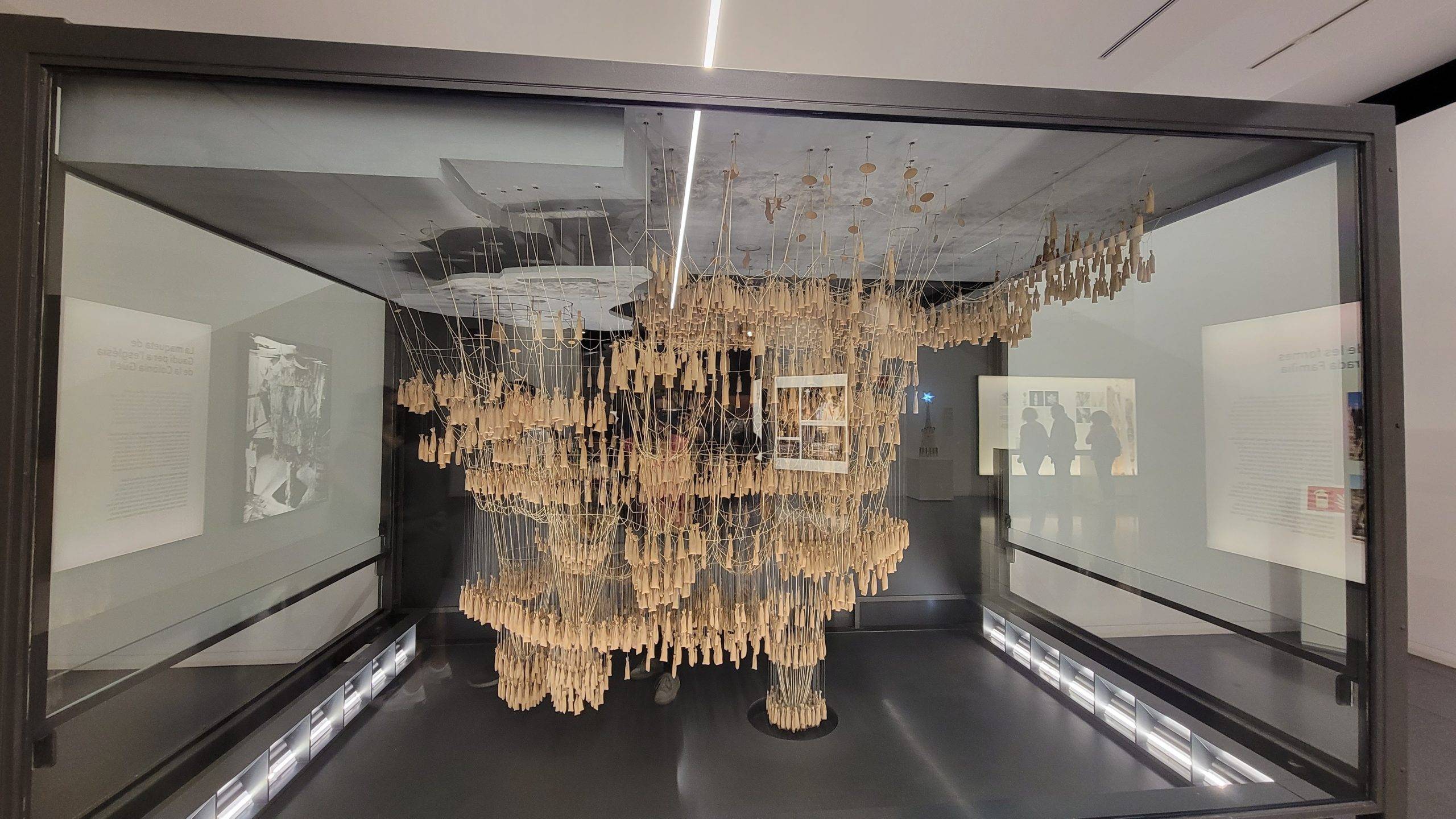
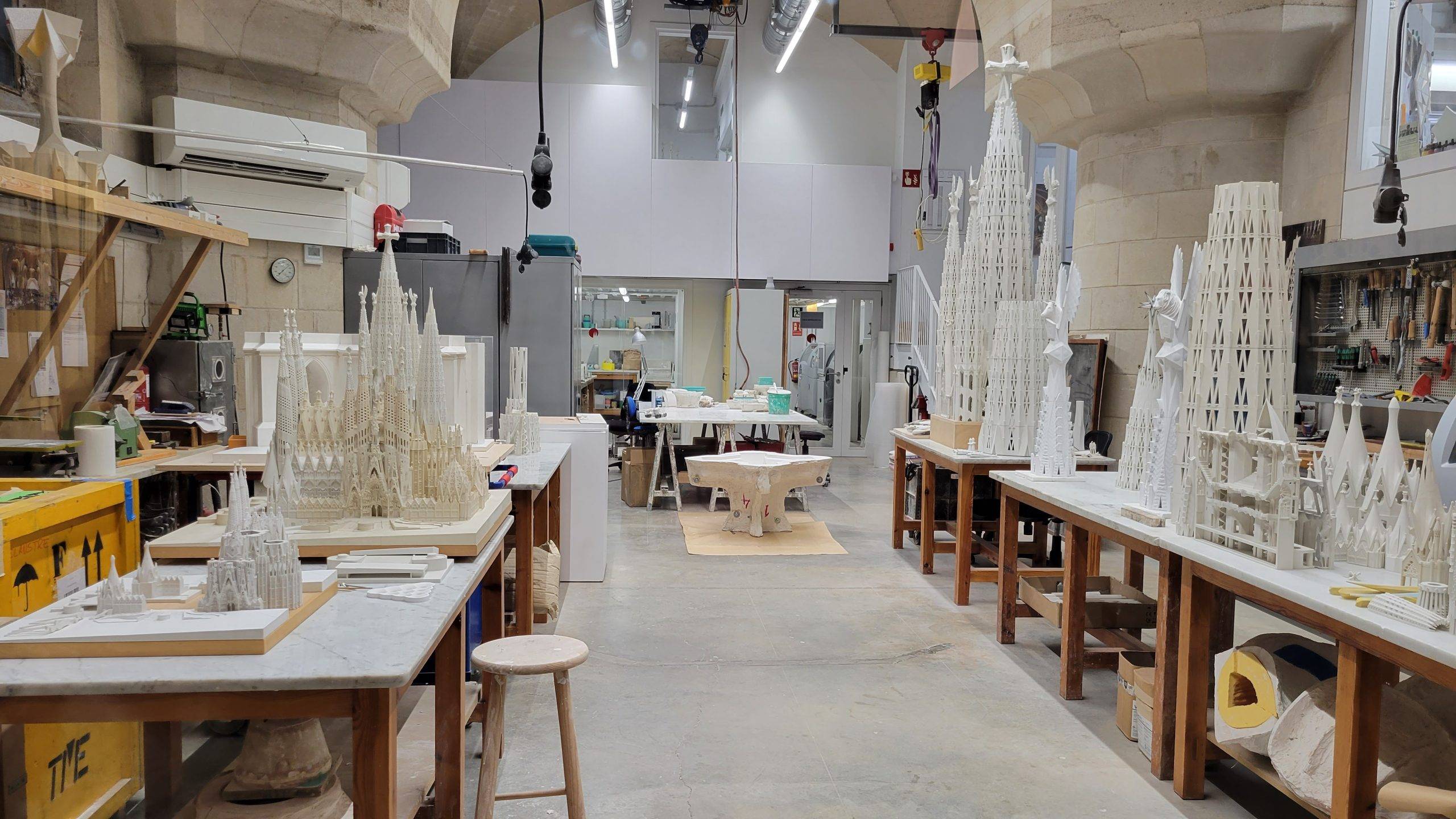
There is also a gift shop mid-way through before the focus shifts to some of Gaudi’s other works in the area.
The Towers
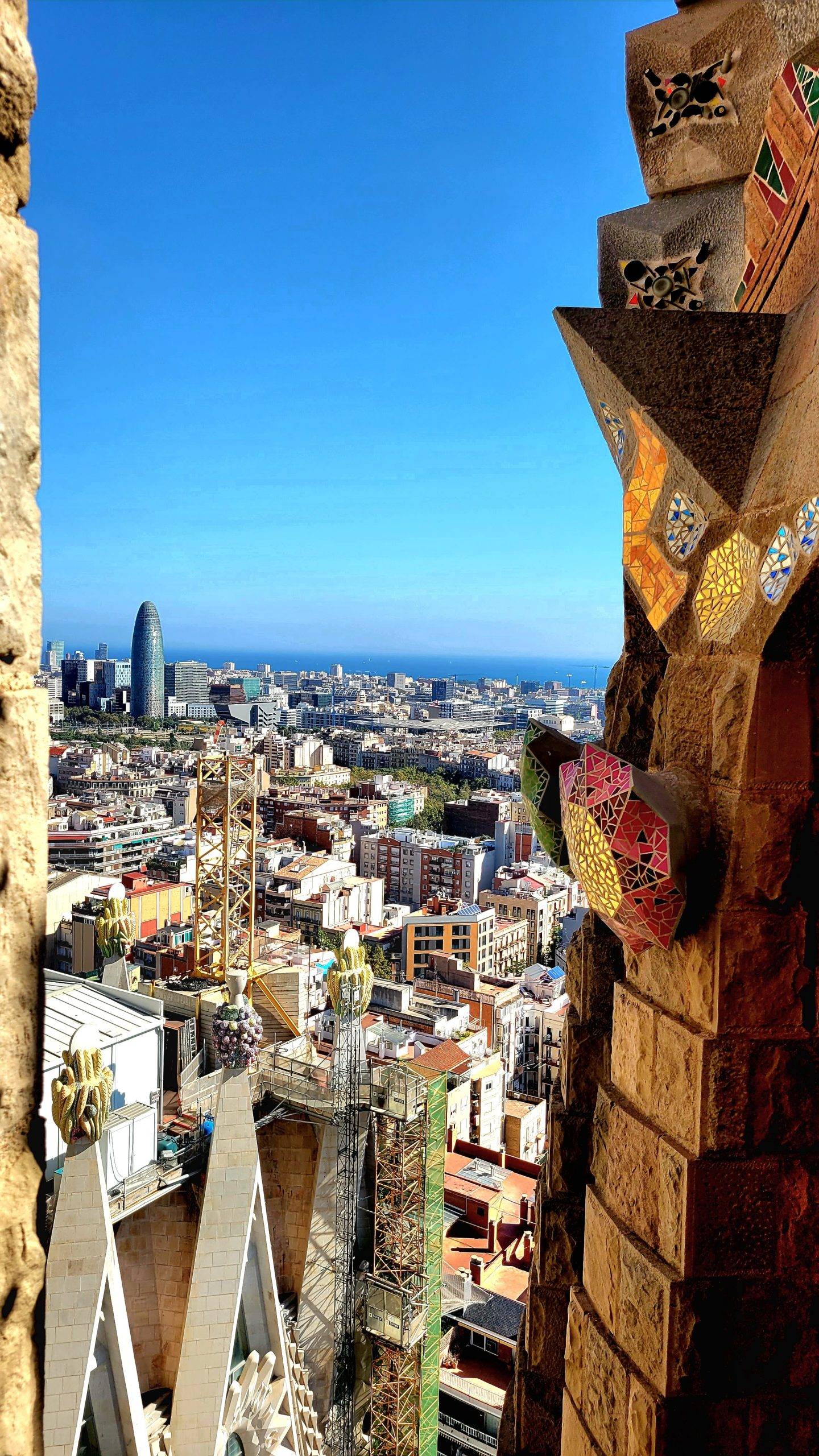
If your ticket includes a tower visit, you’ll be assigned a specific time to go to the top and see the stunning views of Barcelona and the La Sagrada Familia’s facade. You will have two options to choose from: the Nativity Towers or Passion Towers.
When I booked our tour, I really had no idea what the difference between the two towers would be, so I just booked the Passion Towers. Apparently, the Nativity towers are more popular because they directly overlook Barcelona, and that facade was made by Gaudi.
However, we thoroughly enjoyed our trip up the Passion Towers. An elevator took us to the top, where we could see Barcelona spread out before us and the sea off in the distance. From there, we worked our way down the spiral staircases, glimpsing different parts of the Passion facade and central towers all along the way.
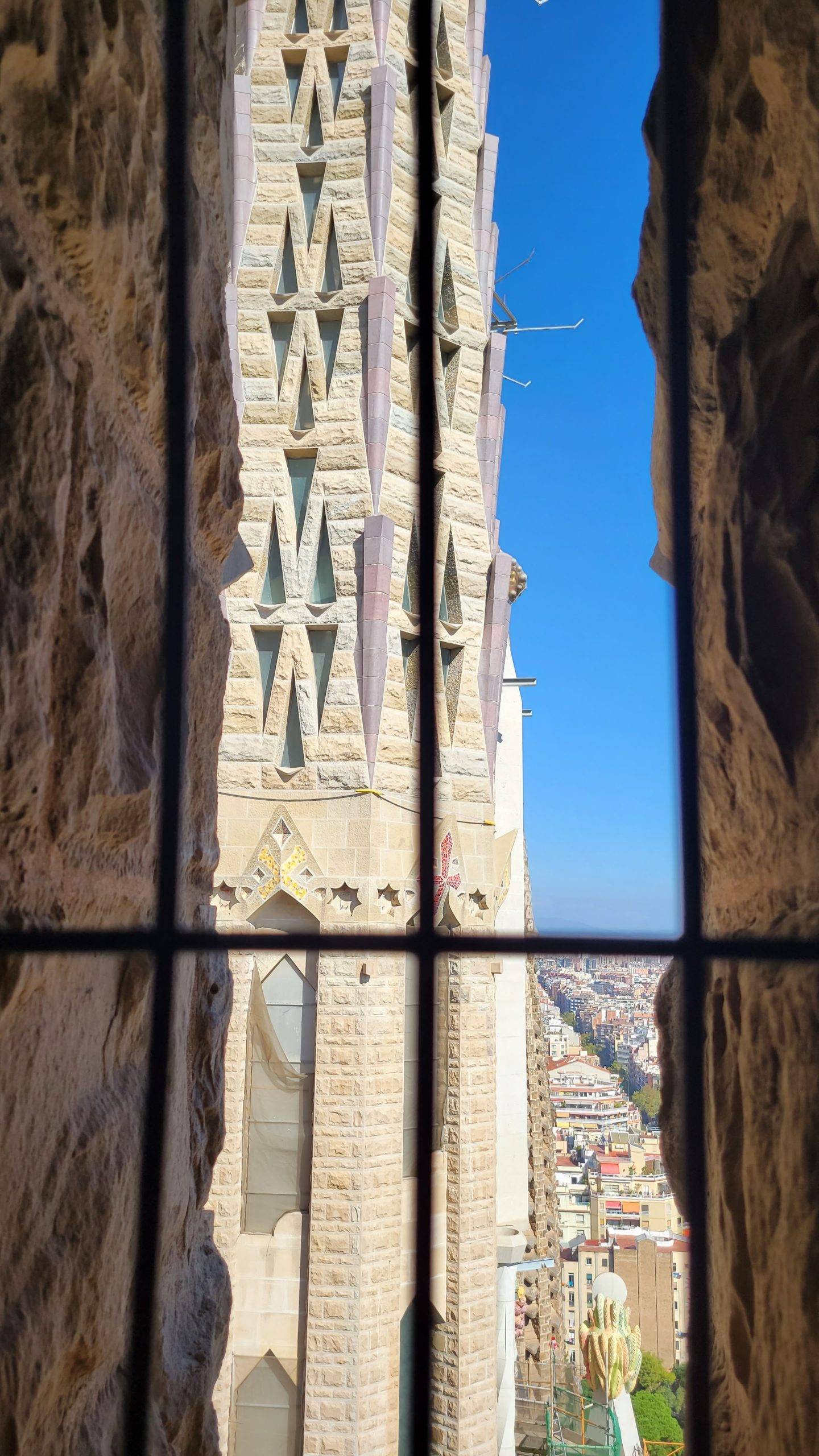
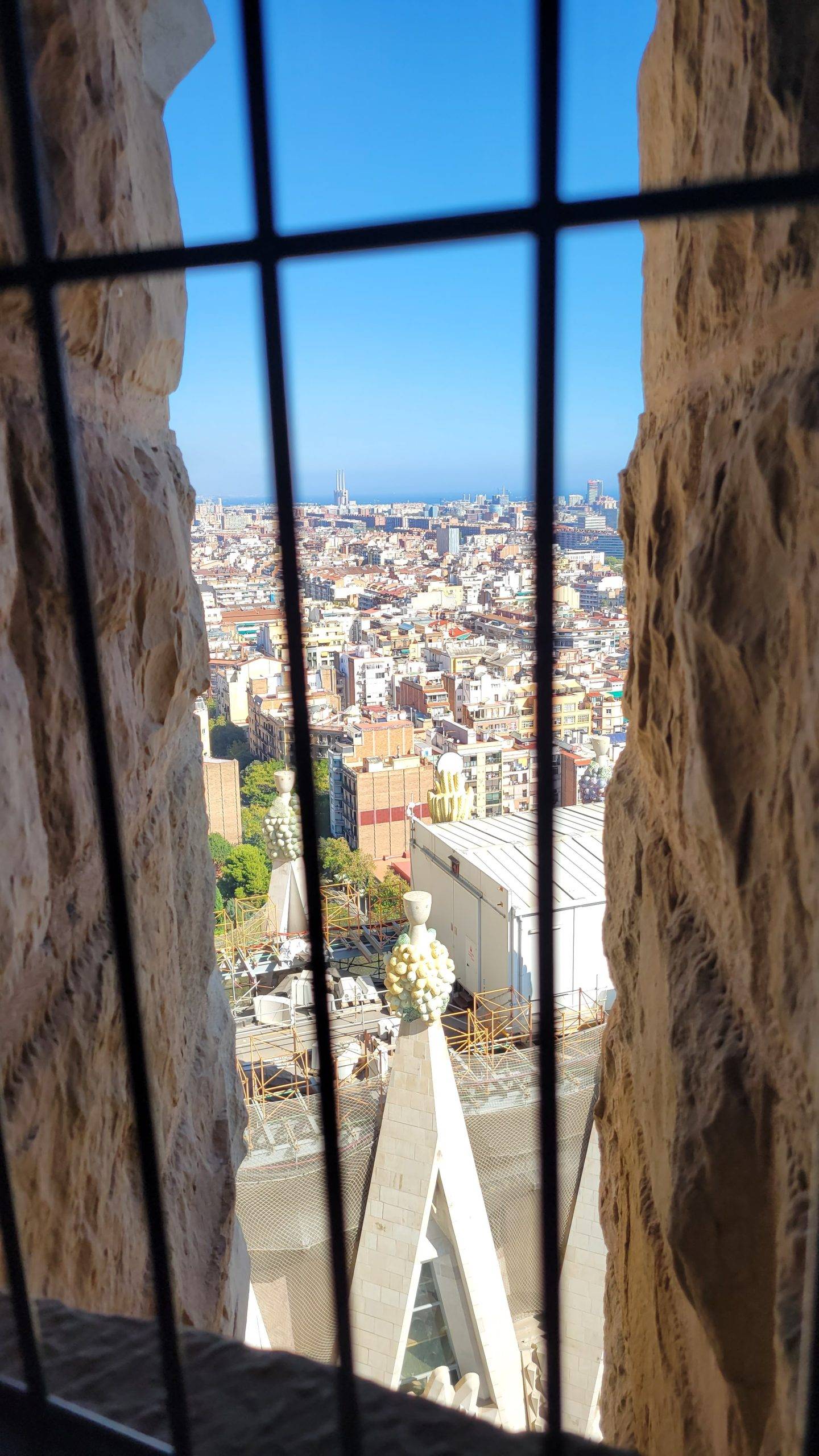
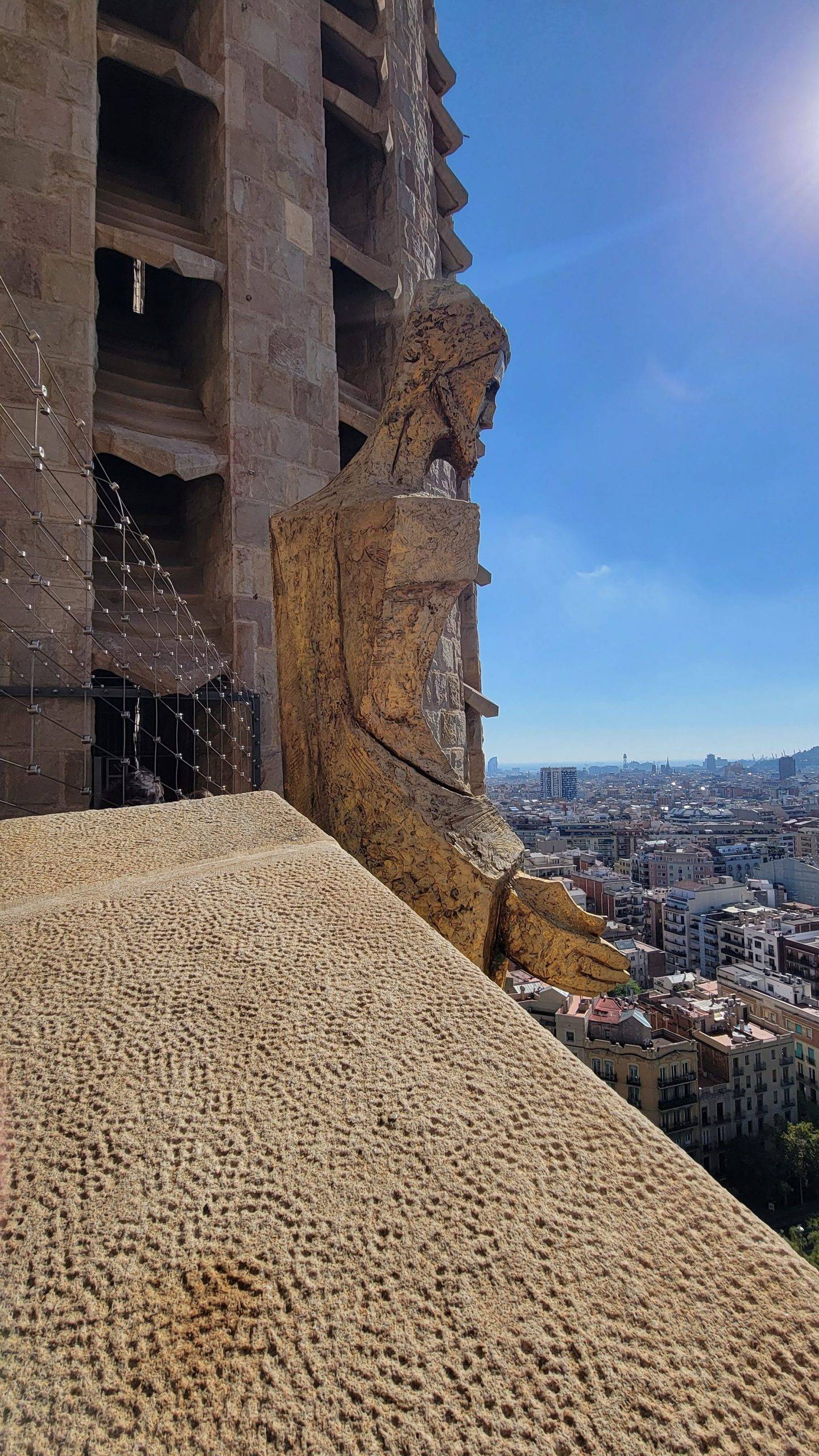
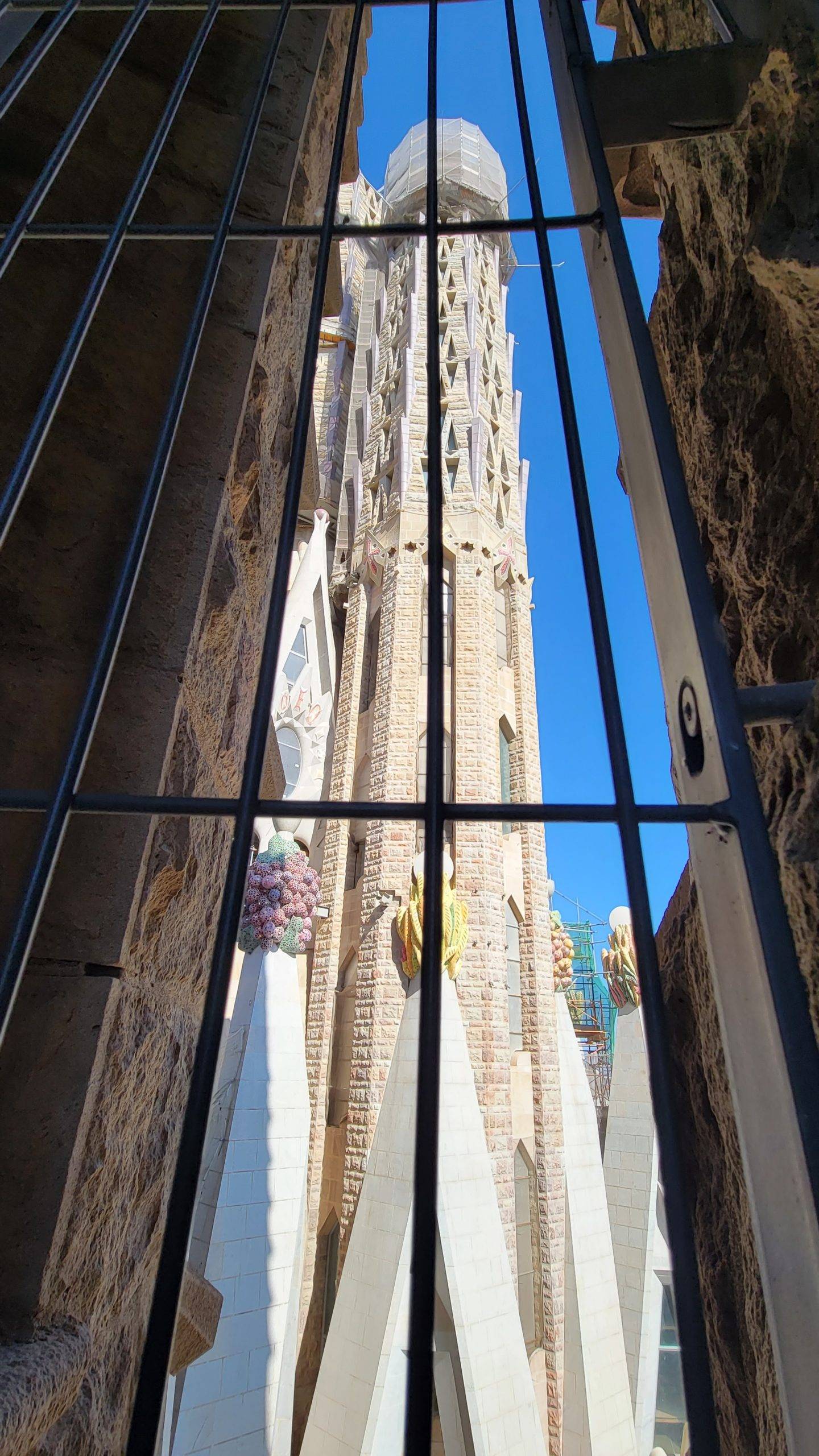
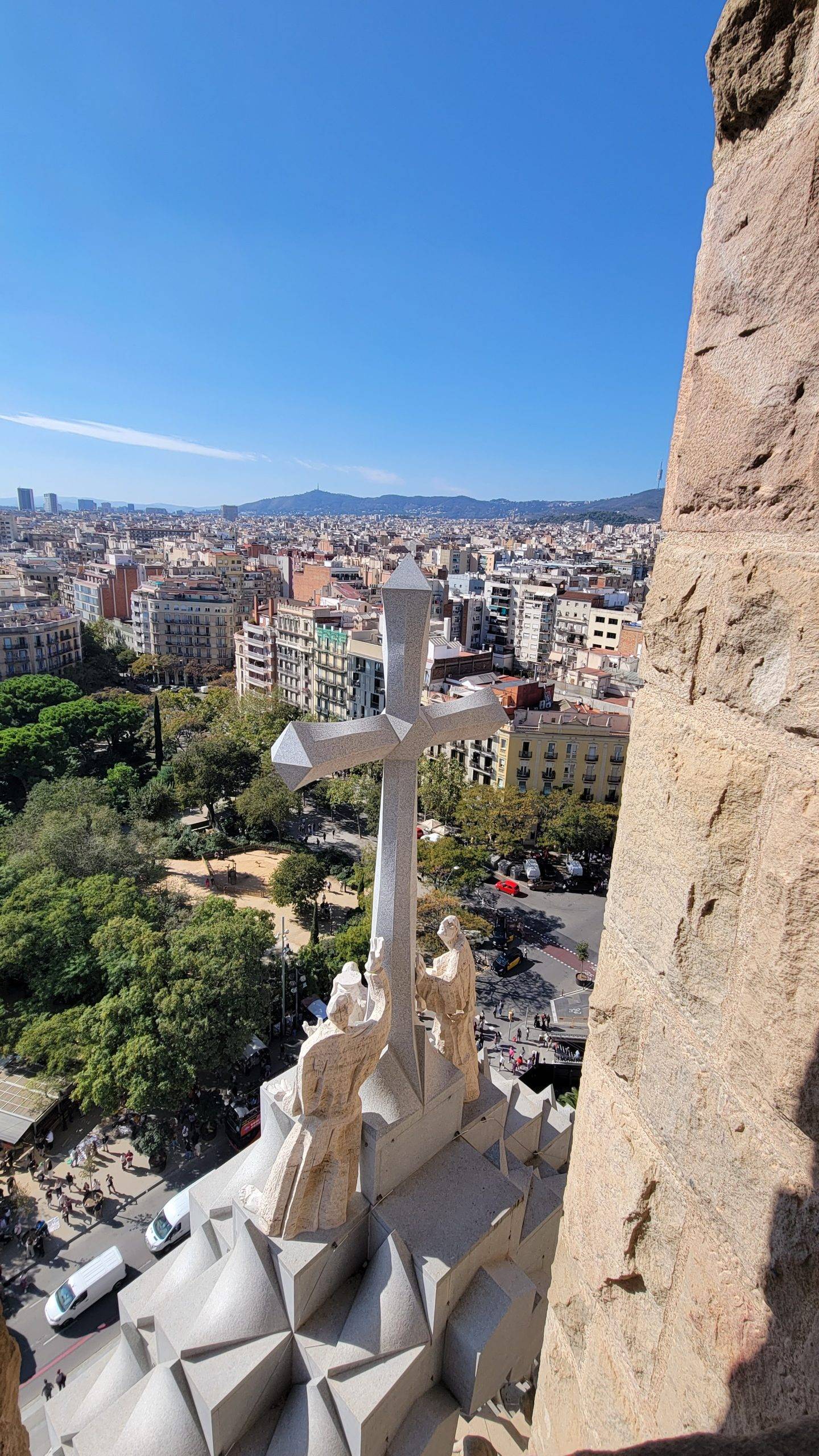
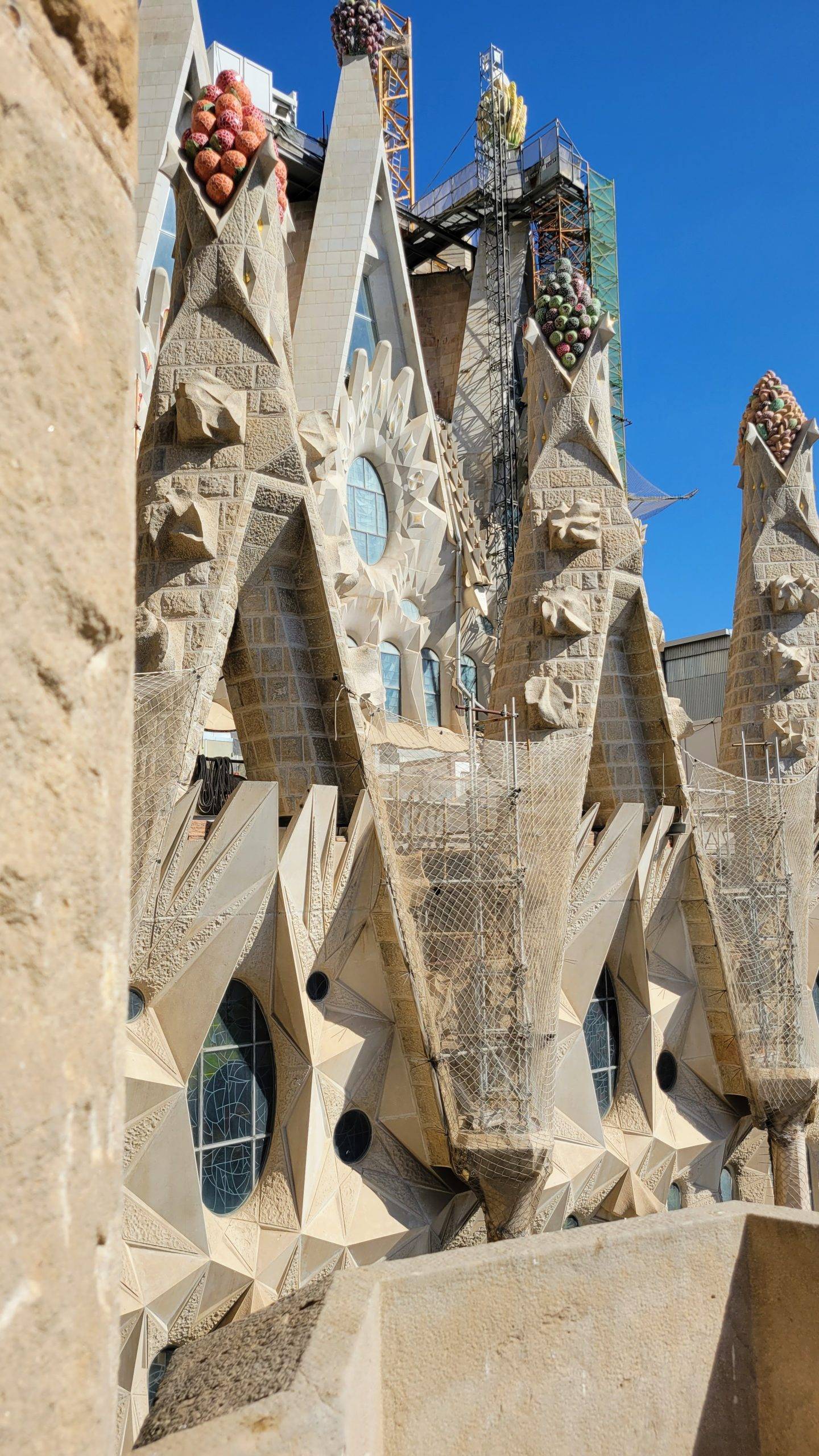
Occasionally, there was a balcony for us to step out on to see more detail. And at one point, there was a bridge that spanned the two sets of towers. We were able to go onto the bridge and see the big picture of what is happening with the central towers, which are still under construction.
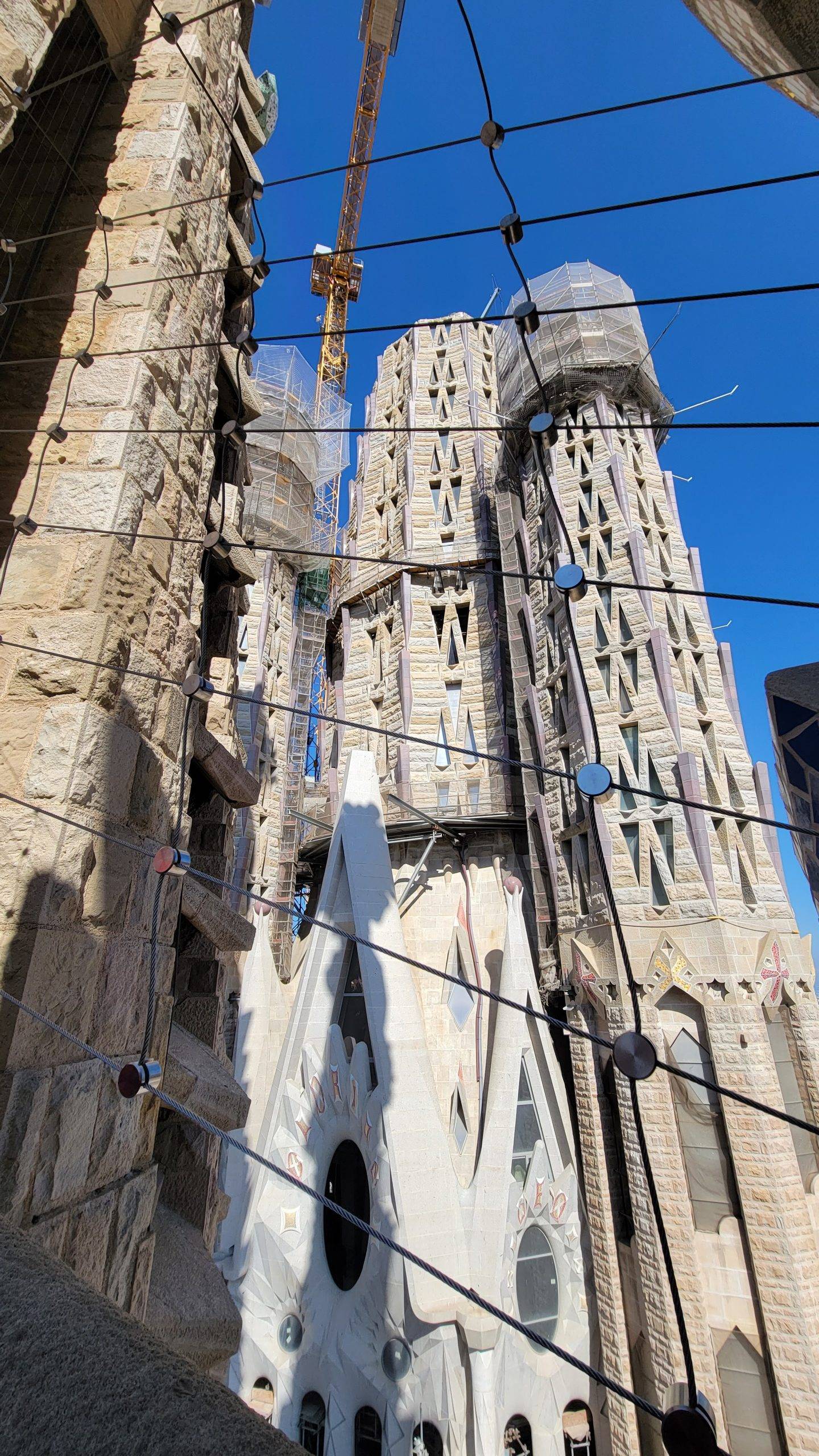
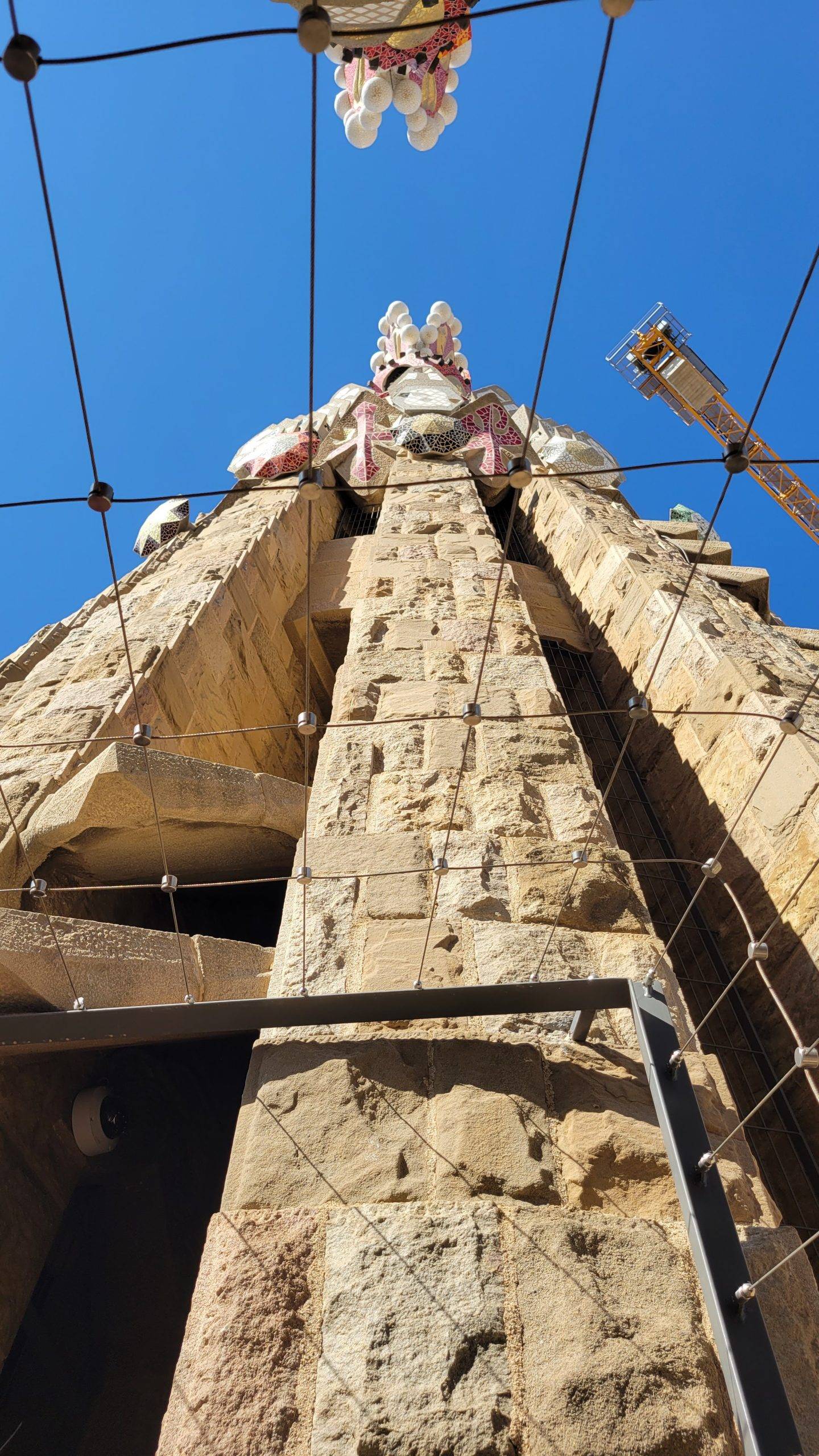

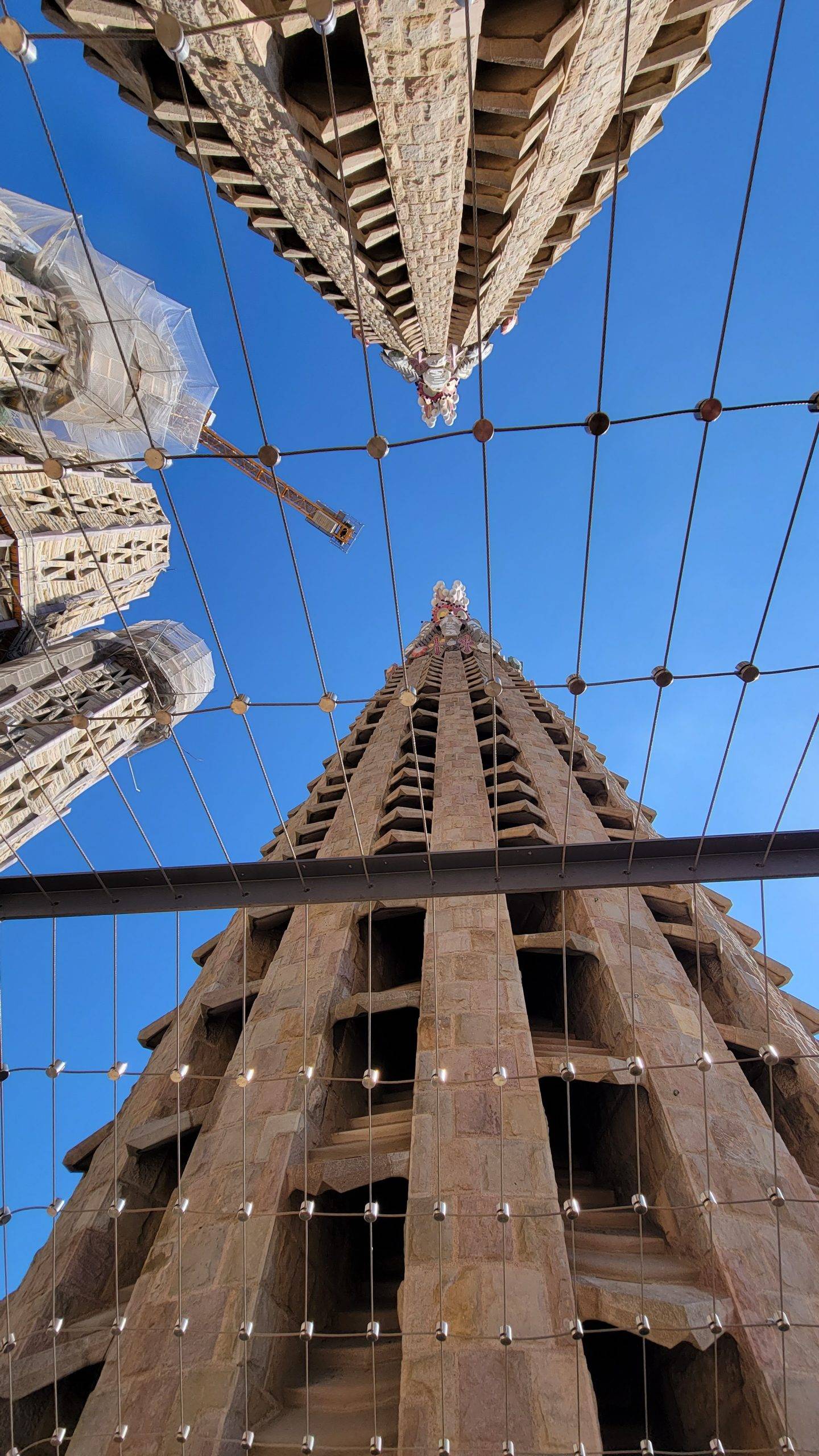
The only thing I didn’t like was that after a certain point, the stairwell became very tight, and the spiral did not have a central railing or beam. It was a bit disconcerting to go down the last 10 stories or so, and I definitely think it’s important to know that in advance. I thought we’d be going back down the elevator, which is not the case.
Closing Thoughts
Words can only do so much to describe how incredible La Sagrada Familia is, so you’ll have to go see for yourself! I can only imagine how grand it will be in a few years when it’s finally finished, but it’s still unforgettable in its current state.
It took us about 2 and a half hours to do the guided tour and towers, so keep that in mind if you’re booking other tours around this visit.
If you have any other questions, please feel free to leave them below, and I’ll do my best to answer them! I had quite a few coming into our visit, and I want you to be able to go in feeling prepared. And don’t forget to save this post to reference for your trip.
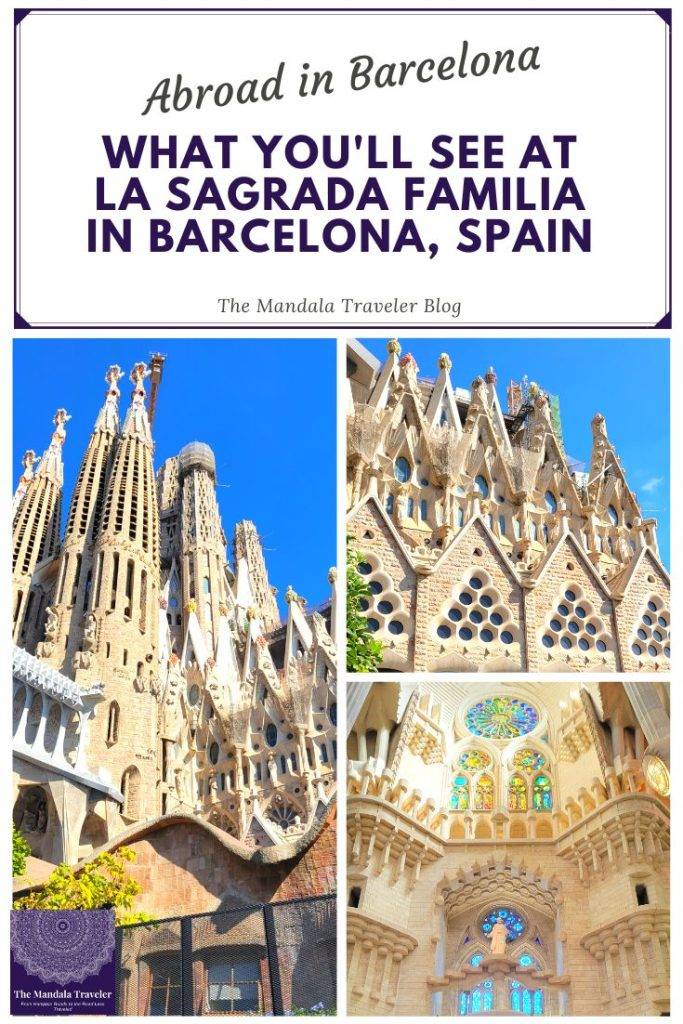
Be sure to stay tuned in the weeks ahead for much more information on Barcelona and the incredible things you can see and do there! We managed to pack a lot into 4 days, including several of Gaudi’s other works, a trip up Montserrat, a Flamenco show, the Barcelona Cathedral, and more. I’ll be sharing details on all of them soon.
What to Read Next…
Mataro, Barcelona: A Relaxing Getaway on the Mediterranean Sea
The Best Barcelona Bucketlist for First-Time Visitors
Make sure you don’t miss a post by signing up for my free blog newsletter if you haven’t already. You’ll be the first to find out about new articles, plus special travel deals for my readers.
Sign Up for Updates from Carried Away Travels
Thanks for joining me on this special Barcelona adventure, and I hope you’ll be back soon for more!
Happy travels!
Ready for More? Check Out These Recent Posts!
- Discover the Magic of Virginia’s Luray Caverns!

- Everything You Need To Pack For A Week In Iceland

- How to Spend 3 Days in Dublin & Northern Ireland

- 11 Essential Things to Know Before Visiting Iceland

- My Top 12 Travel Tools For Saving Time & Money

- Dublin Exploration Hack: Big Bus Tours

Make Vacation Planning Easier
Download my Vacation Planner or Travel Blogger’s Planner today!
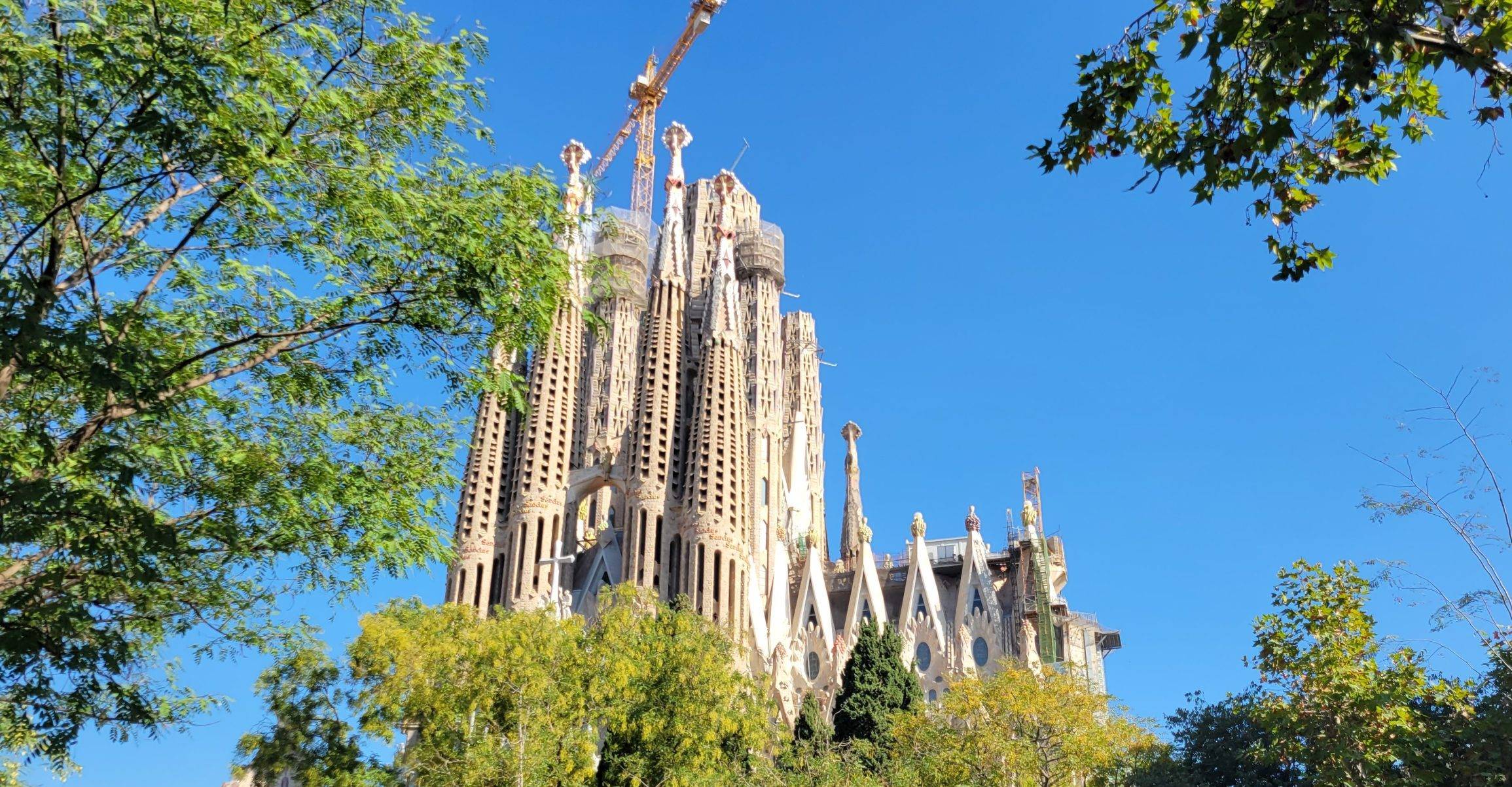





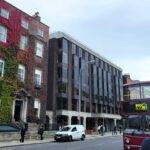

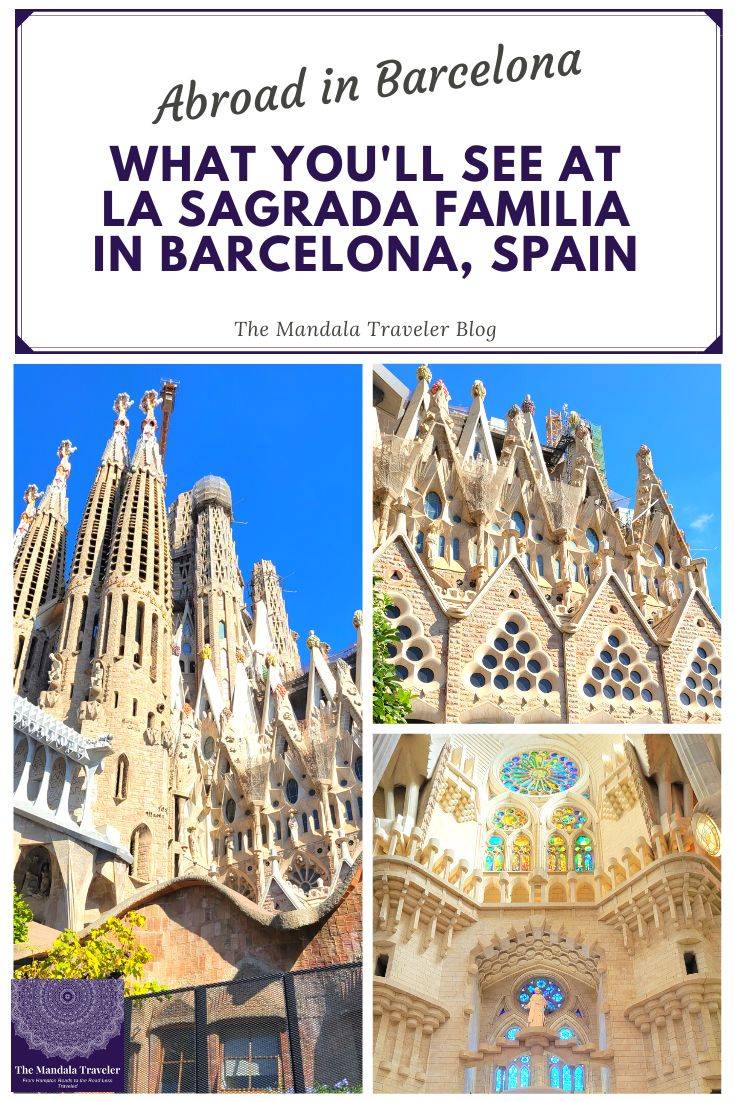
Pingback: The Best Barcelona Bucketlist for First-Time Visitors
Pingback: Park Guell: One of My Favorite Stops in Barcelona |